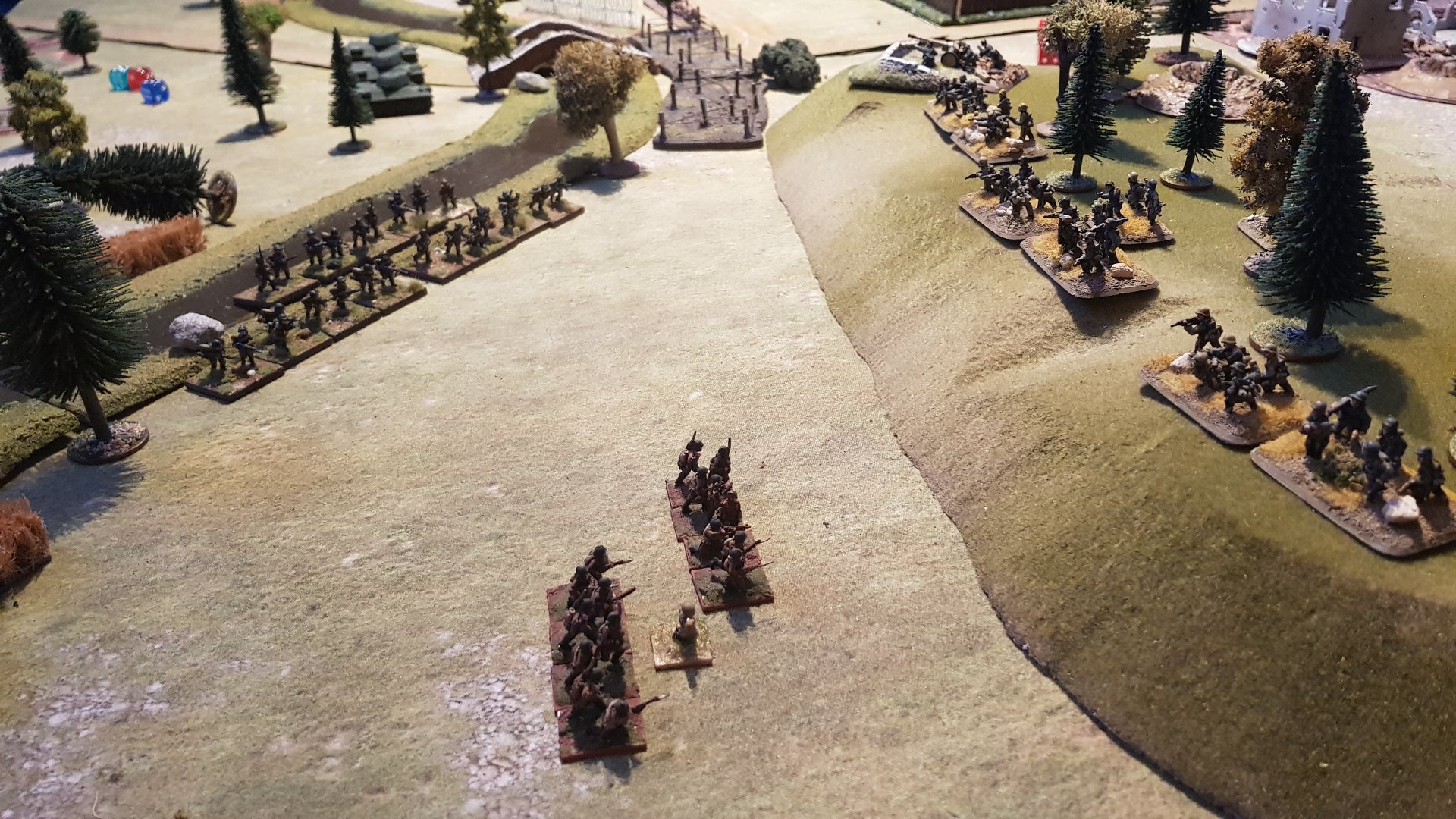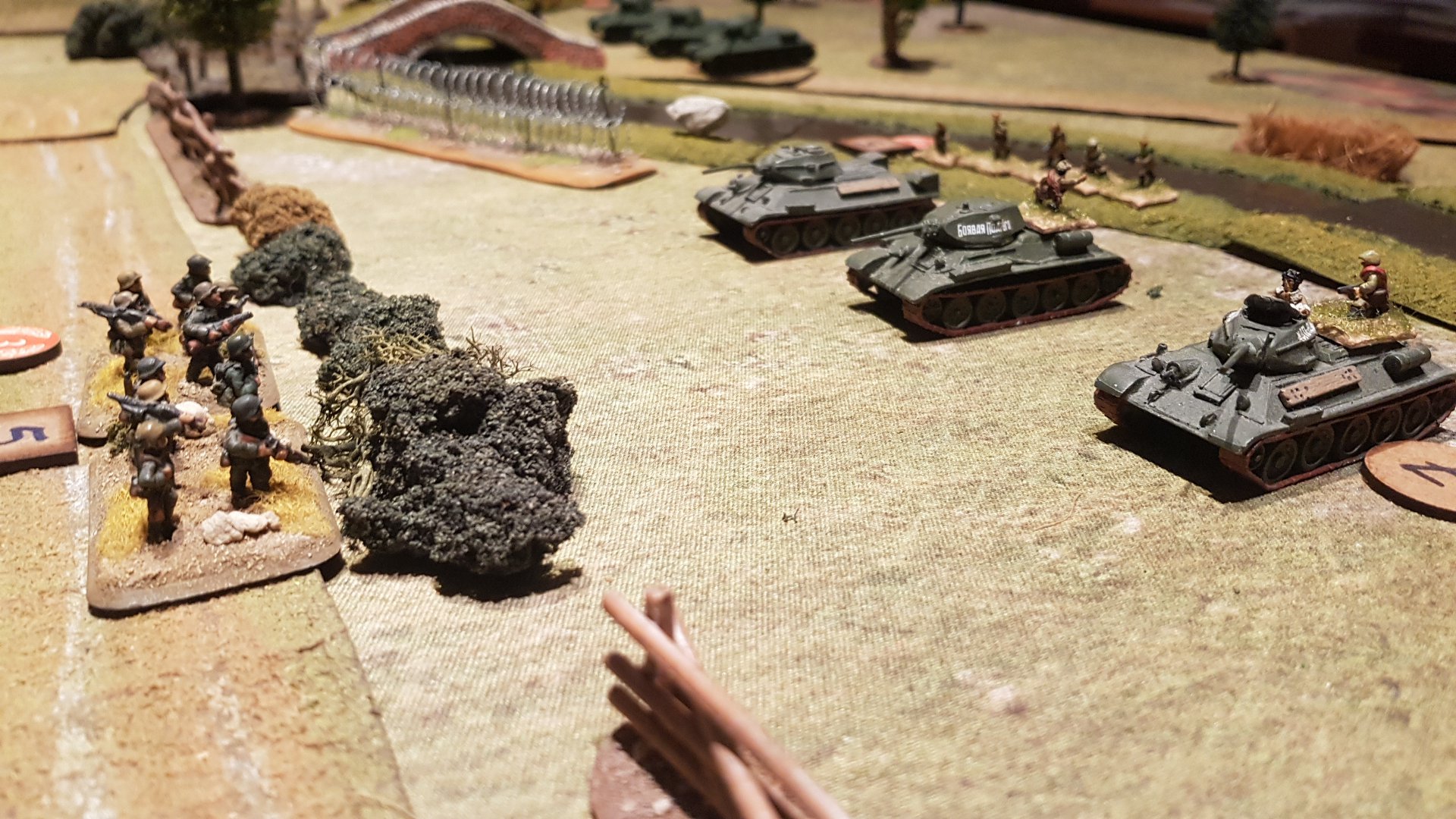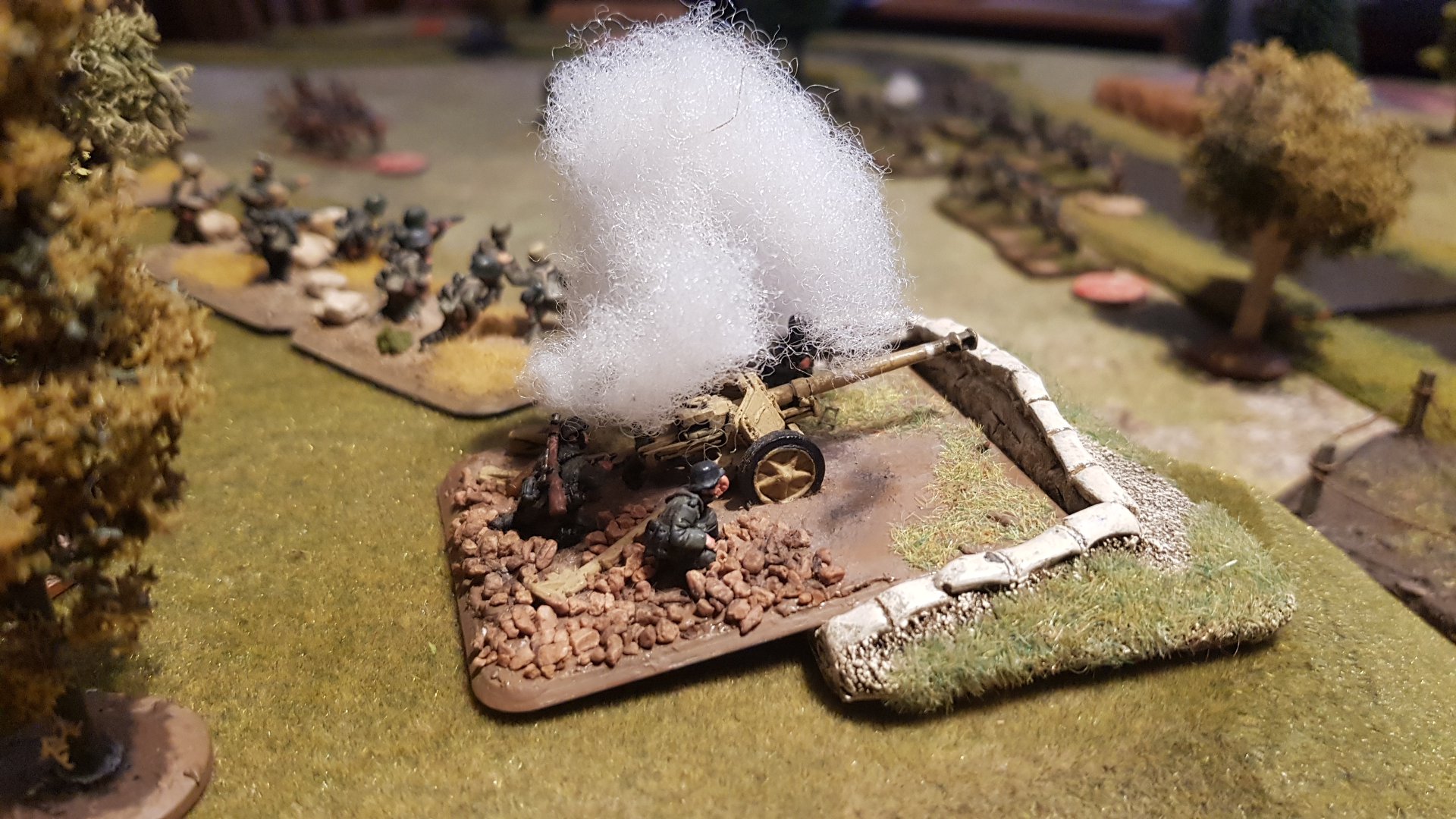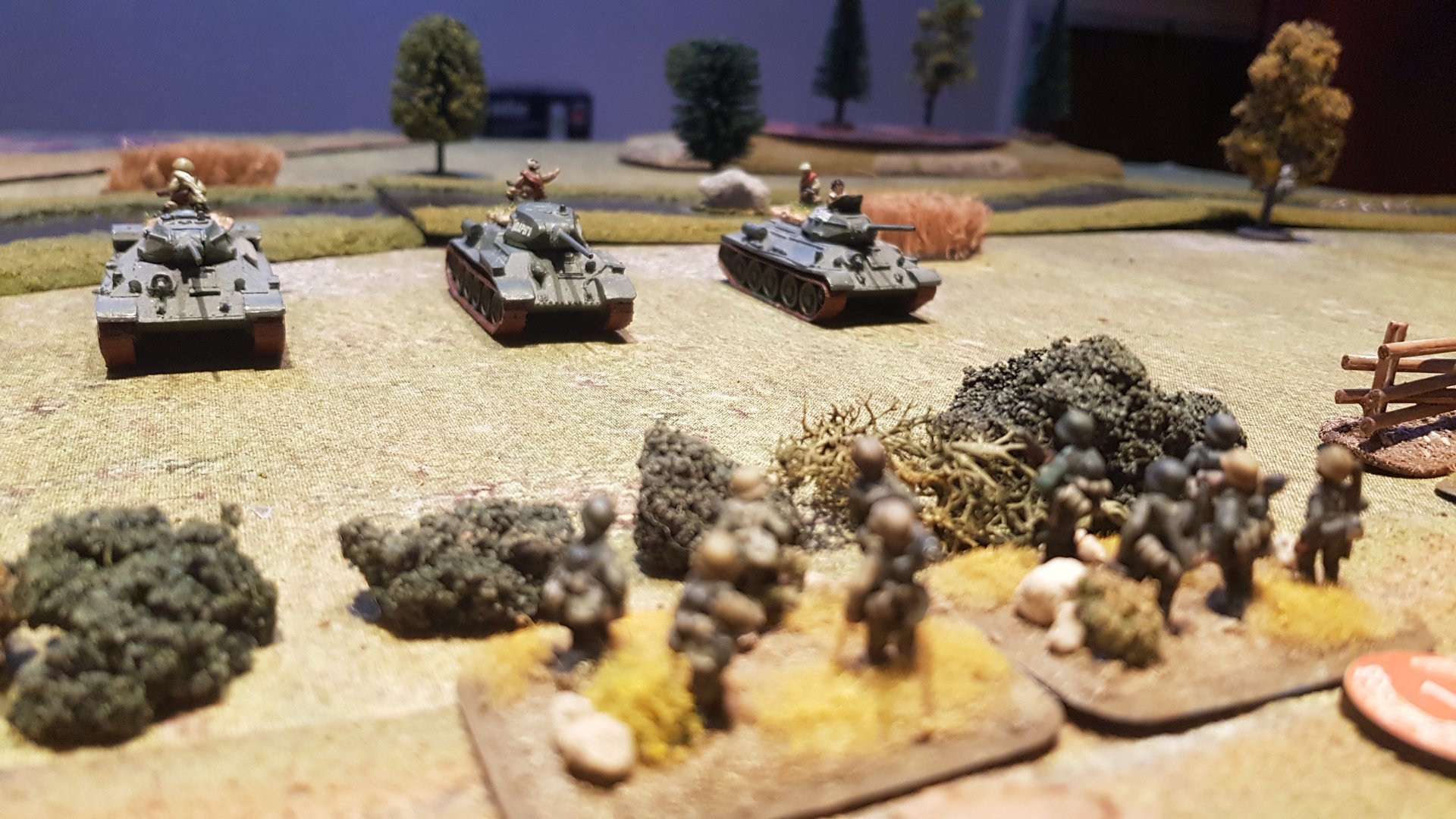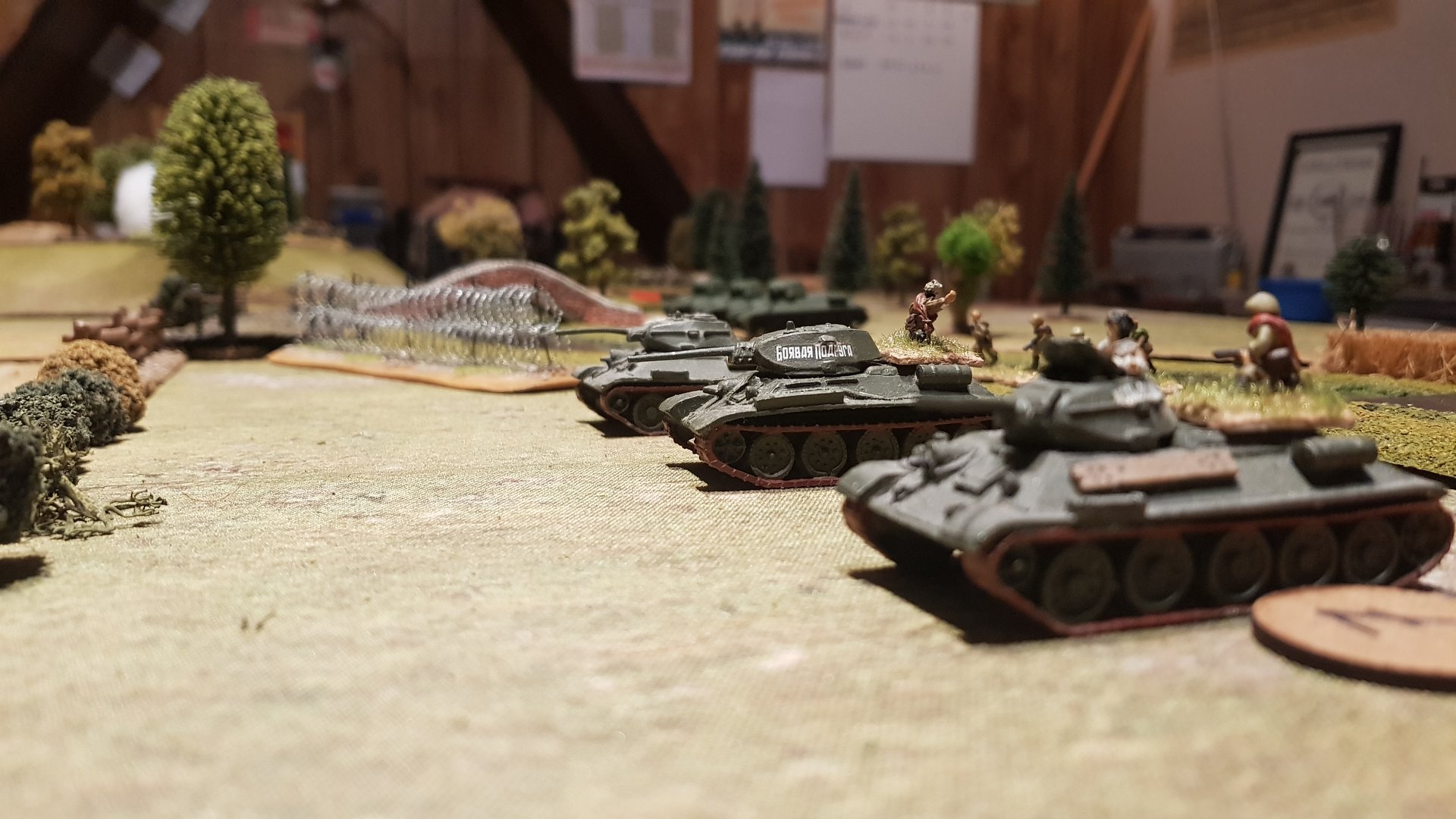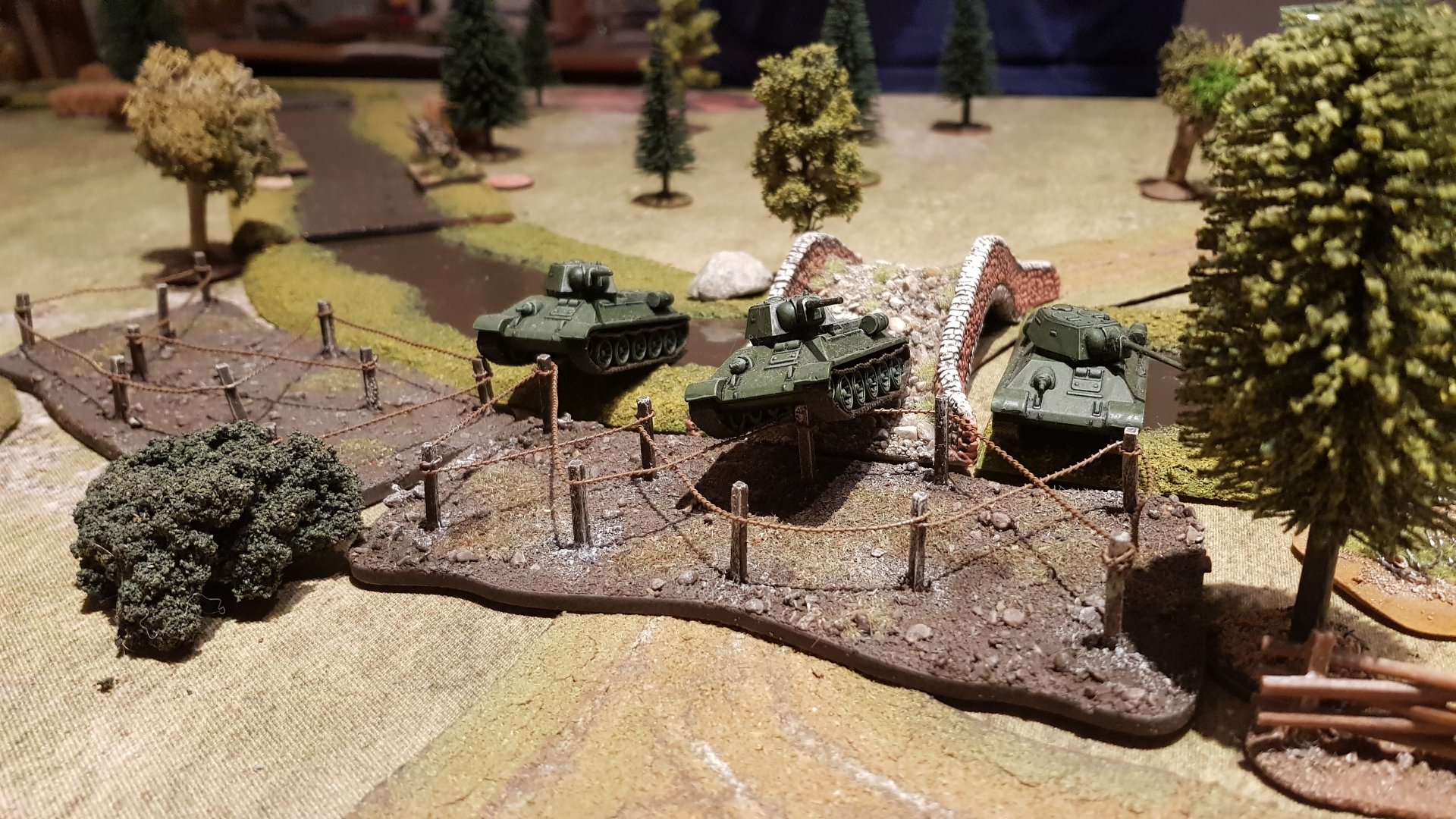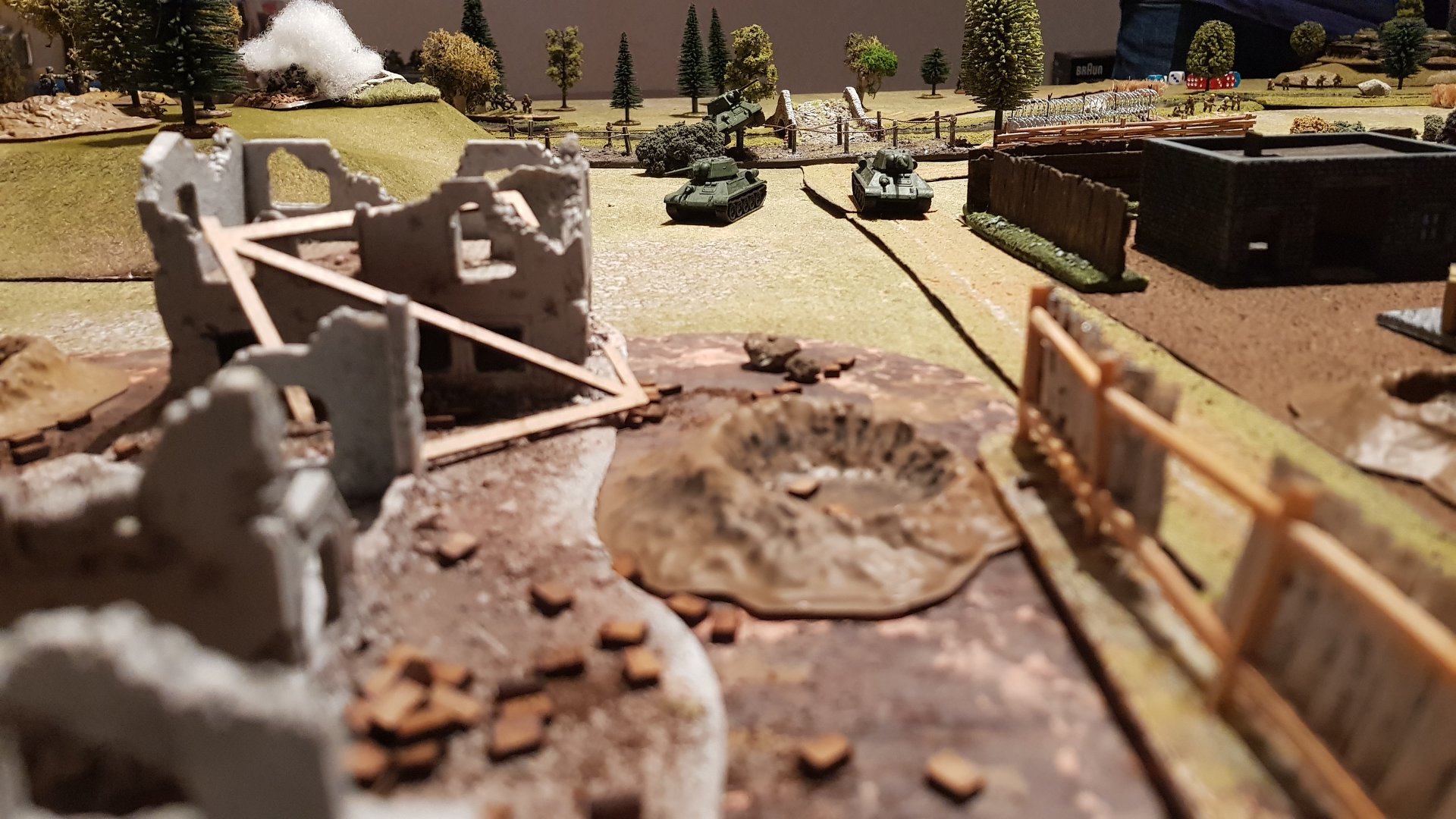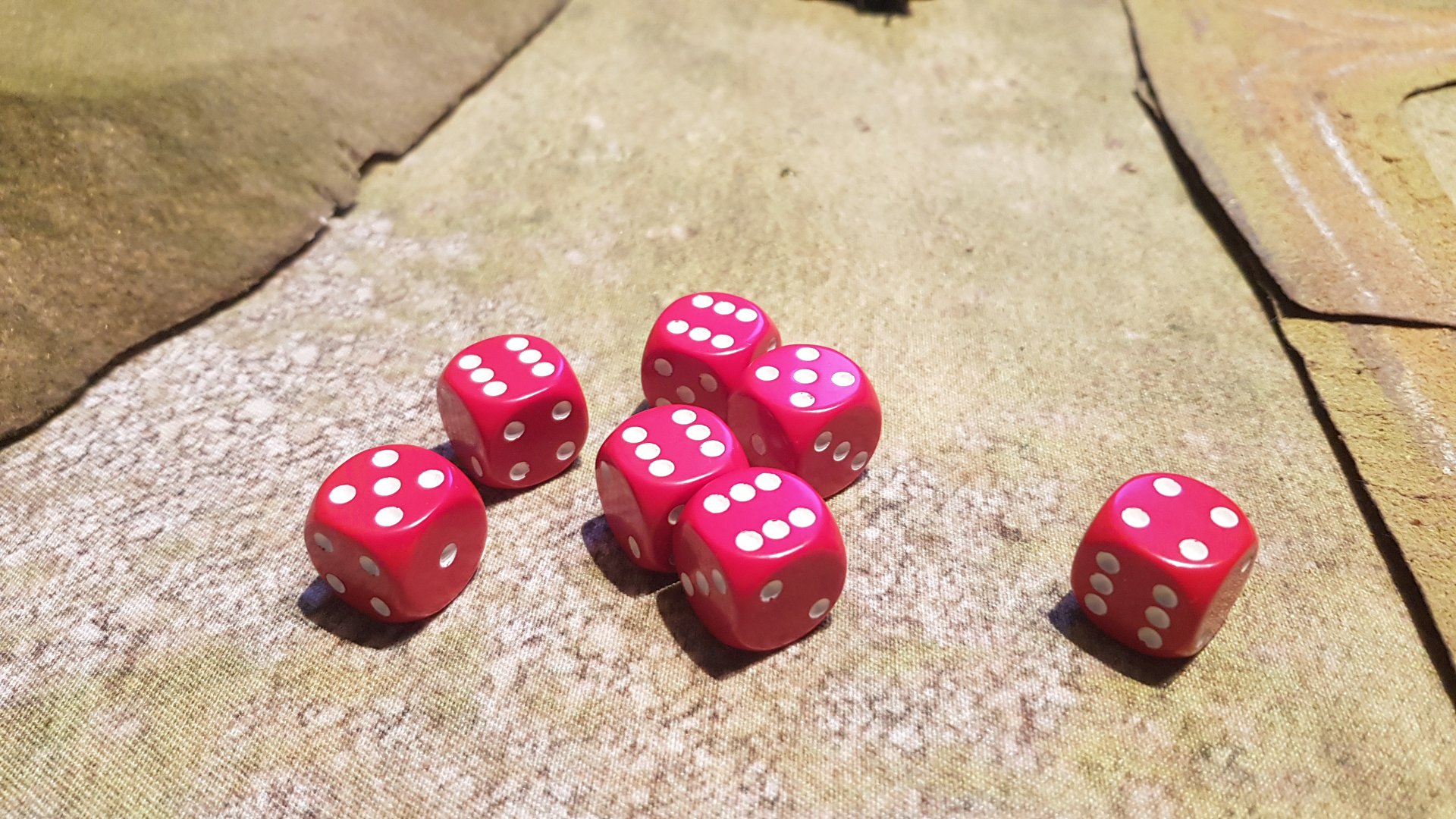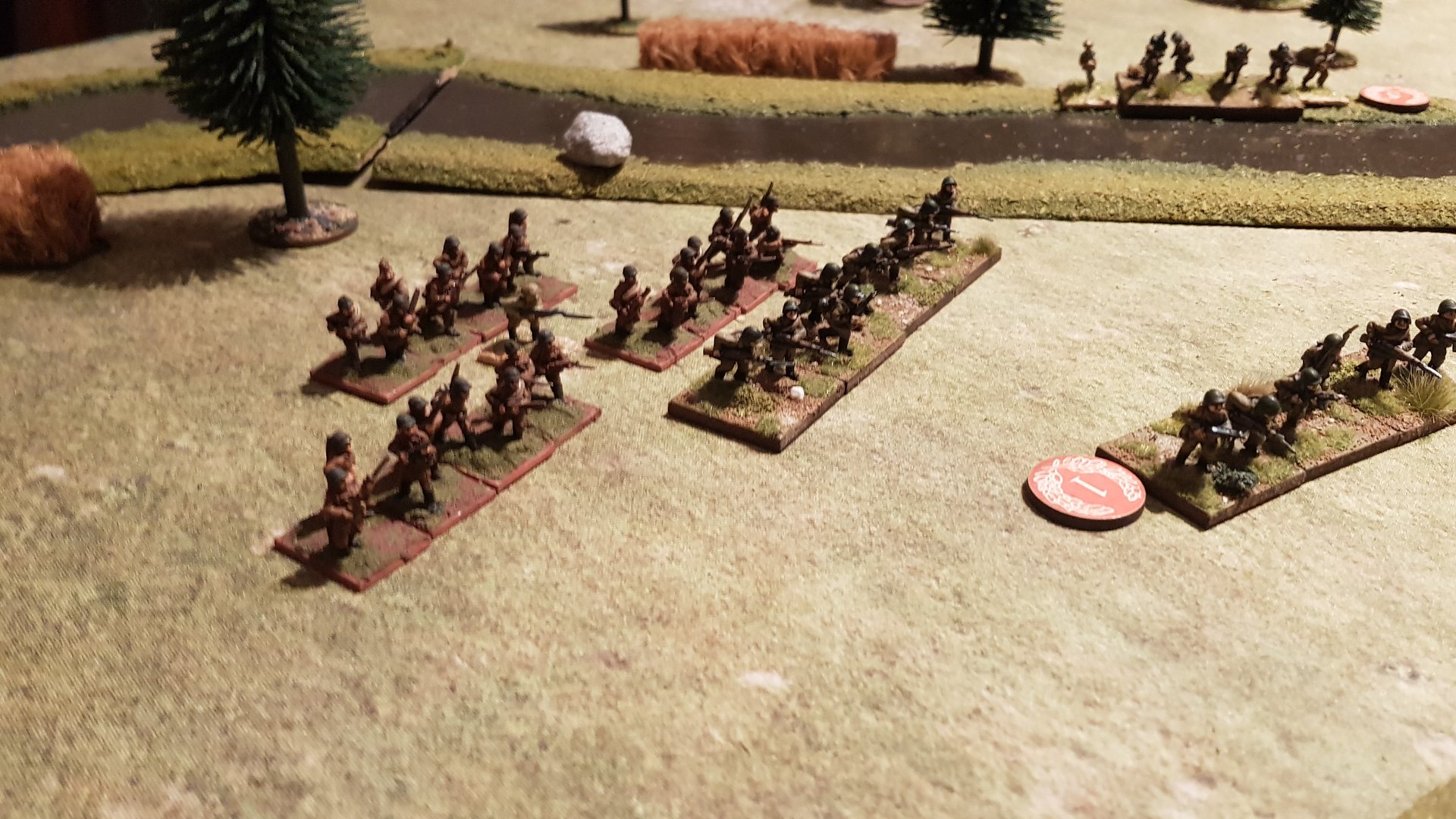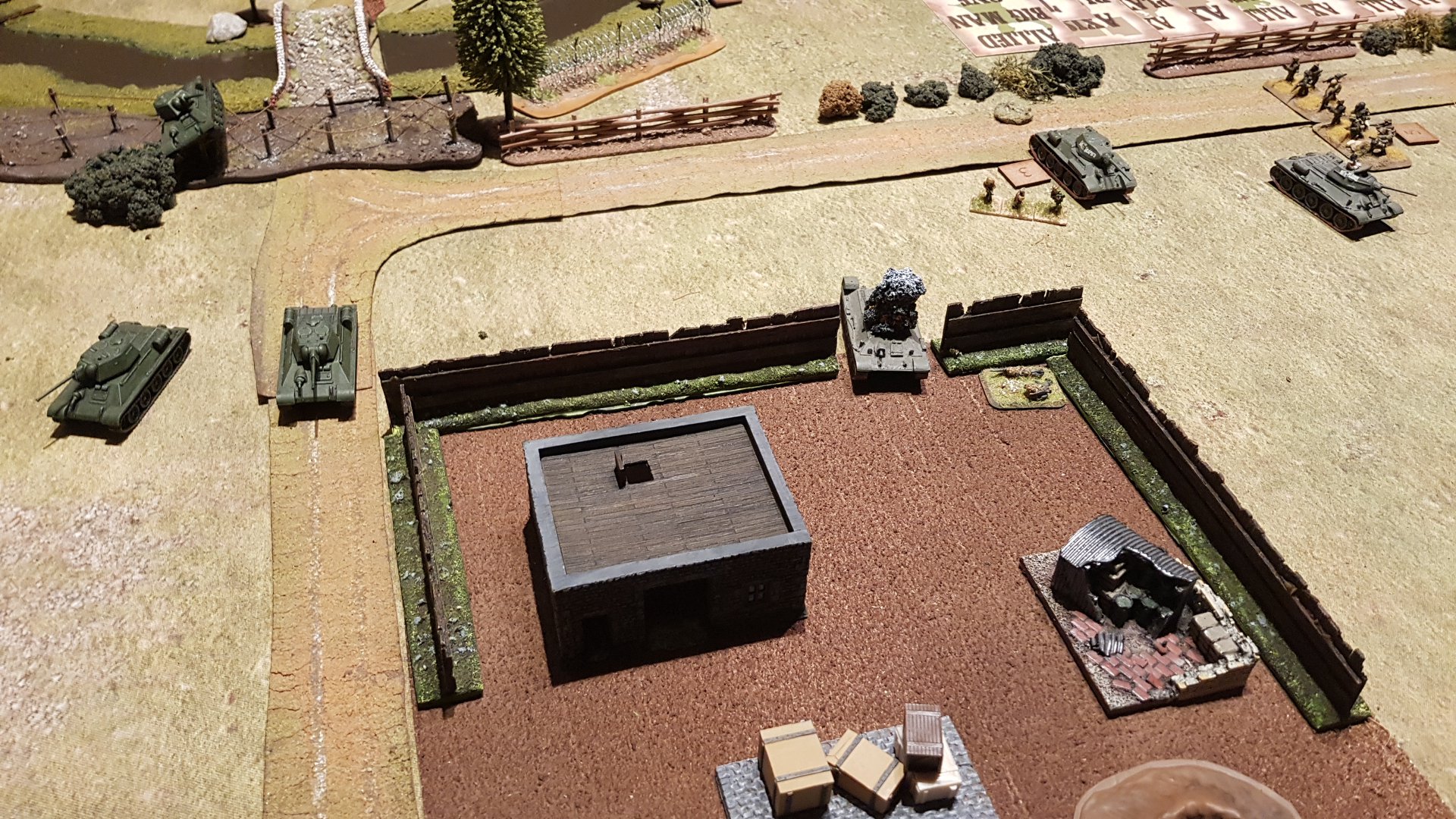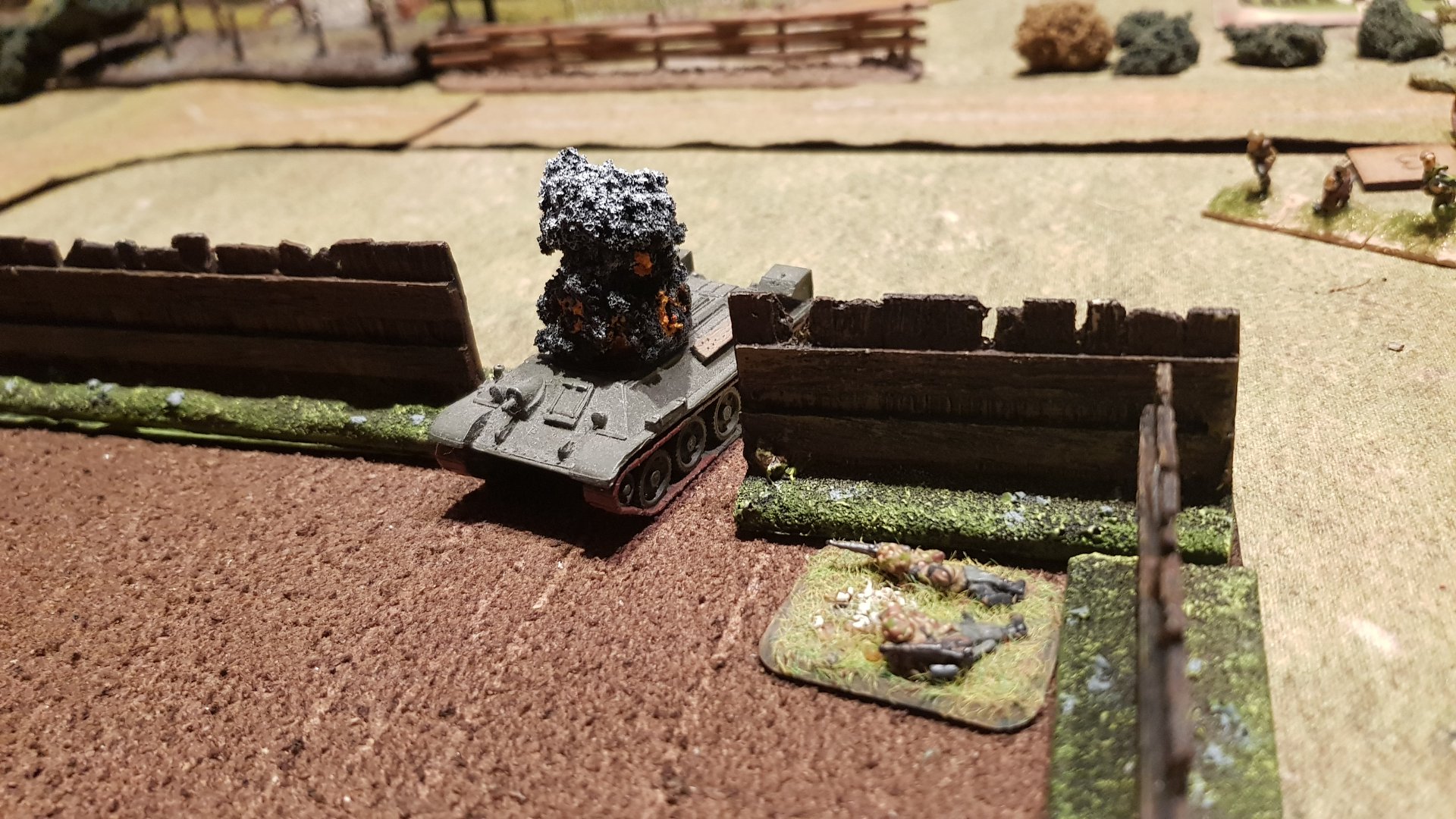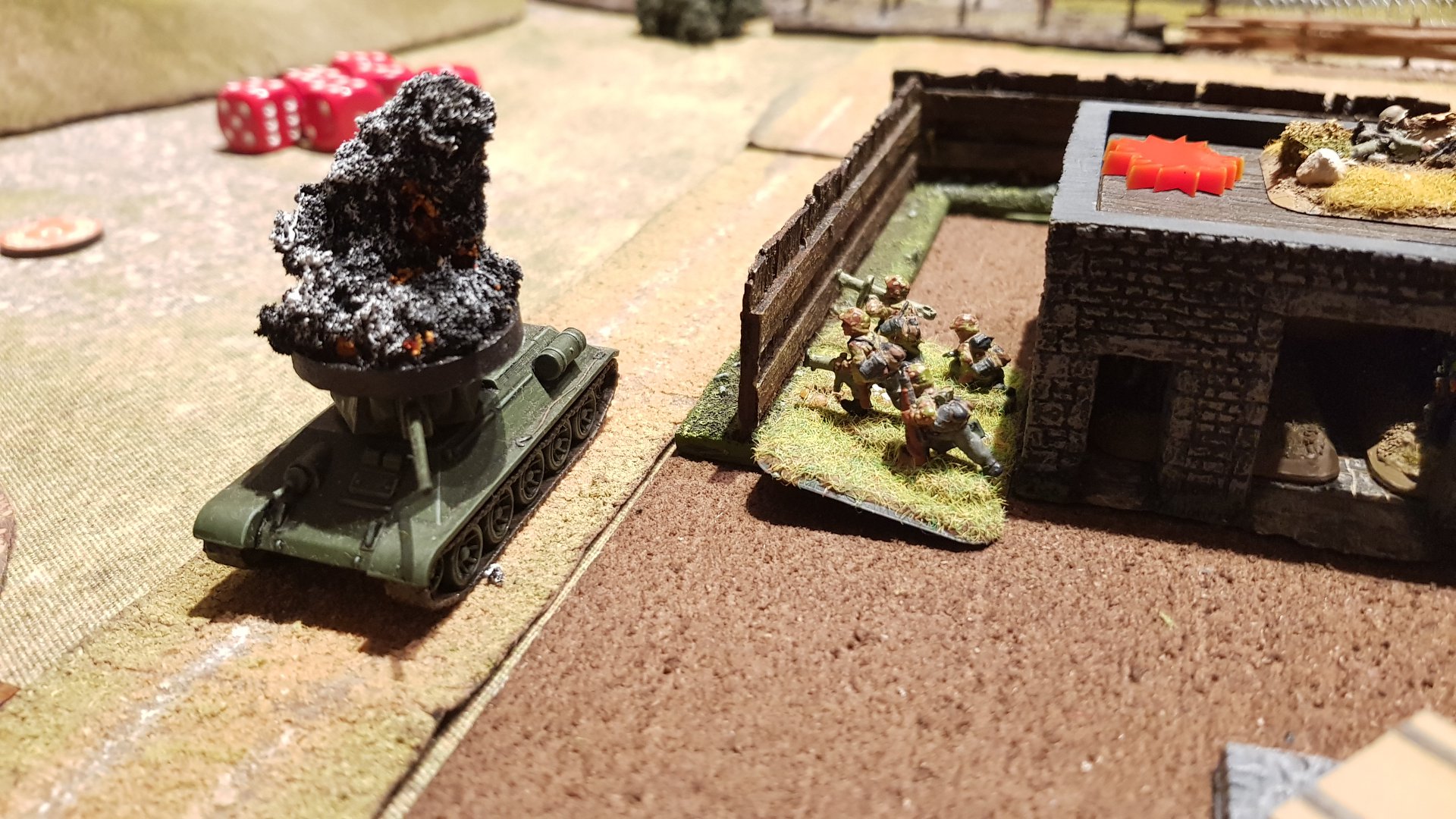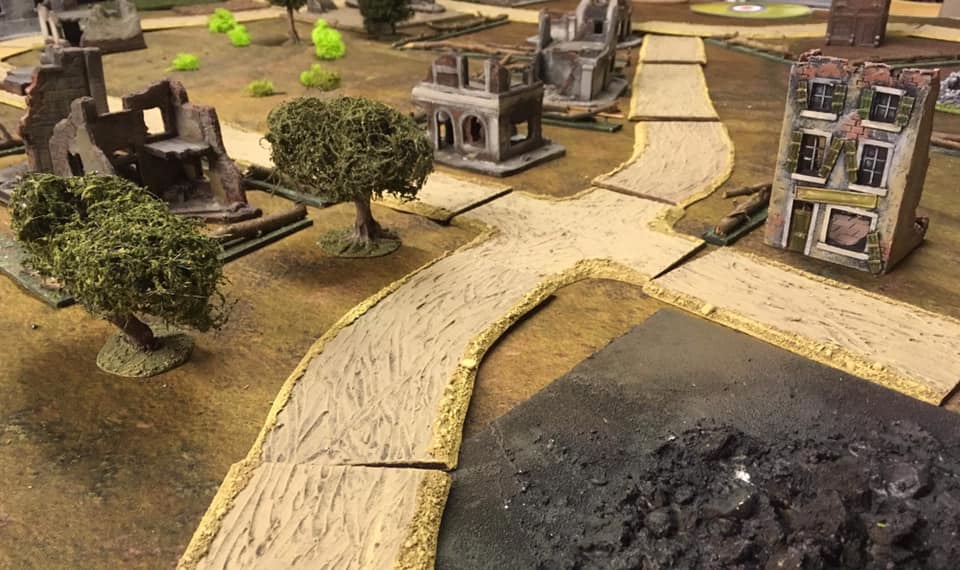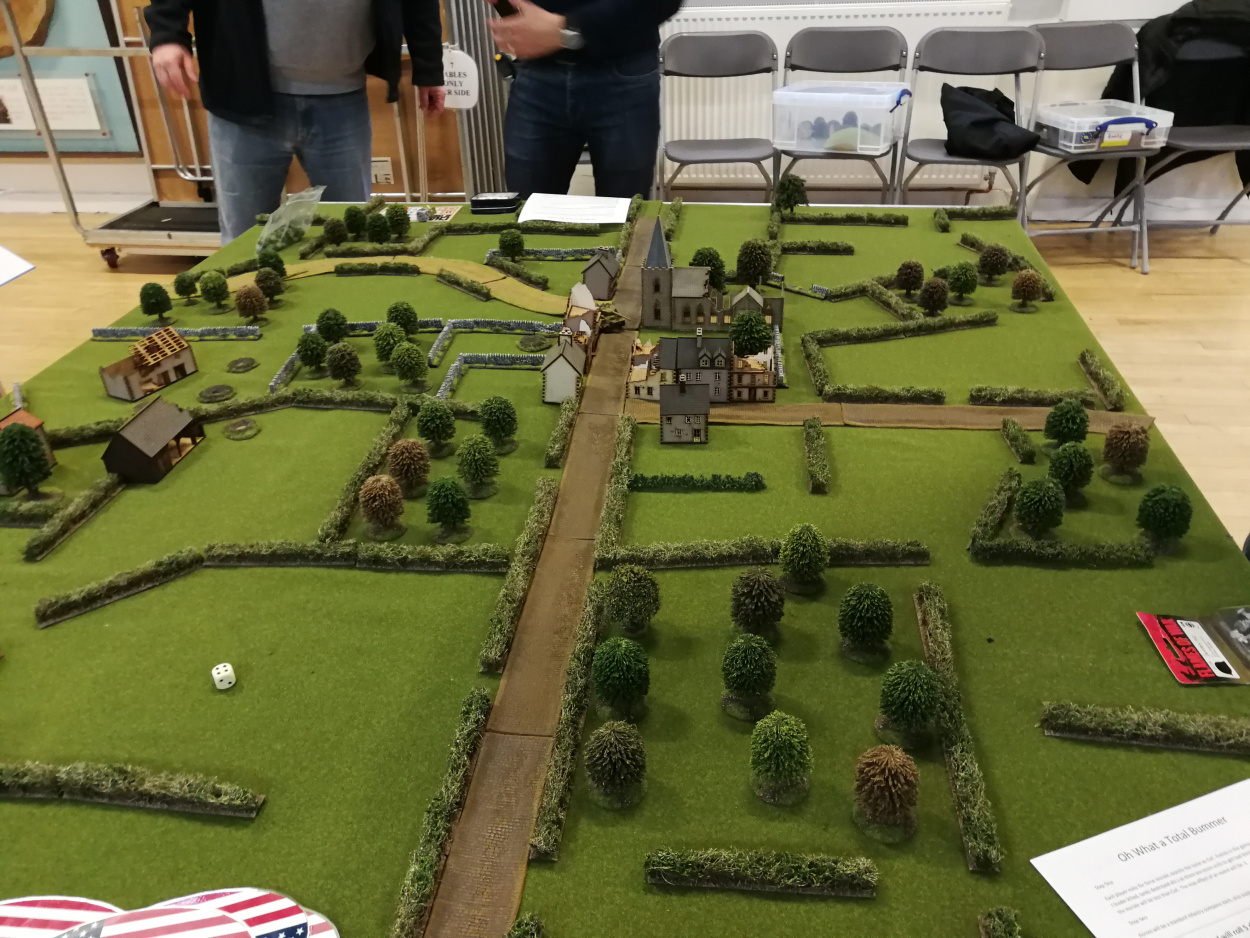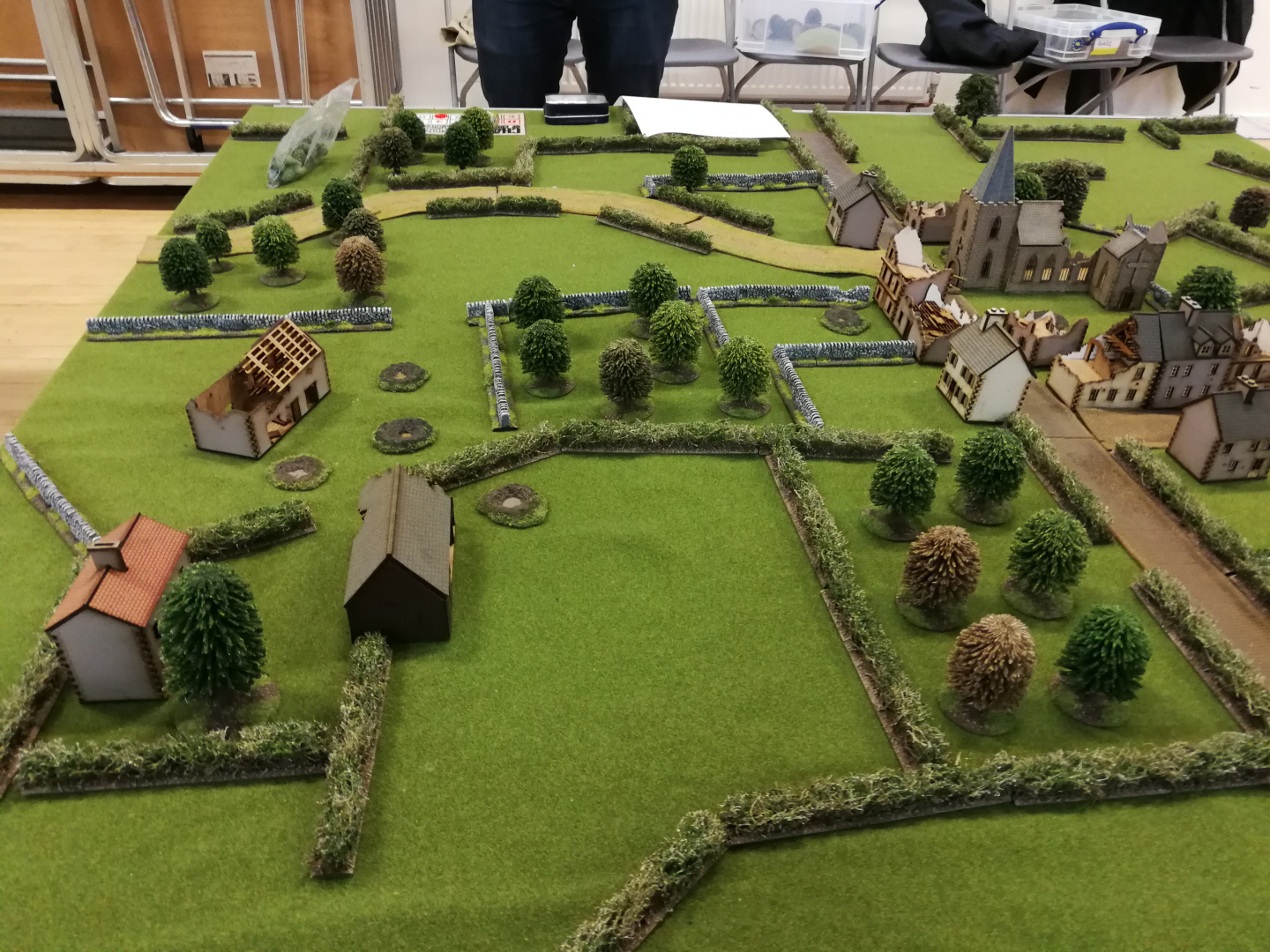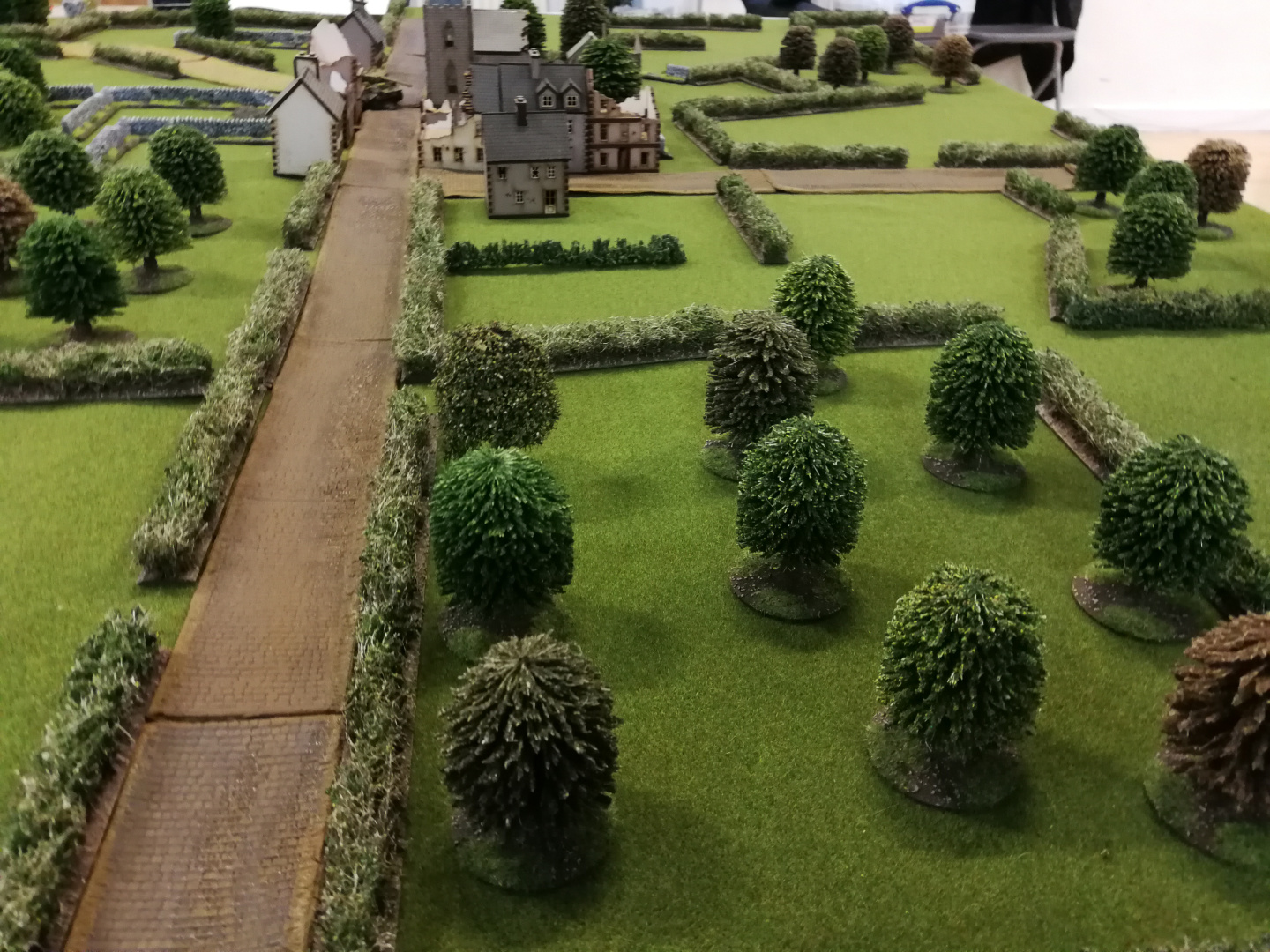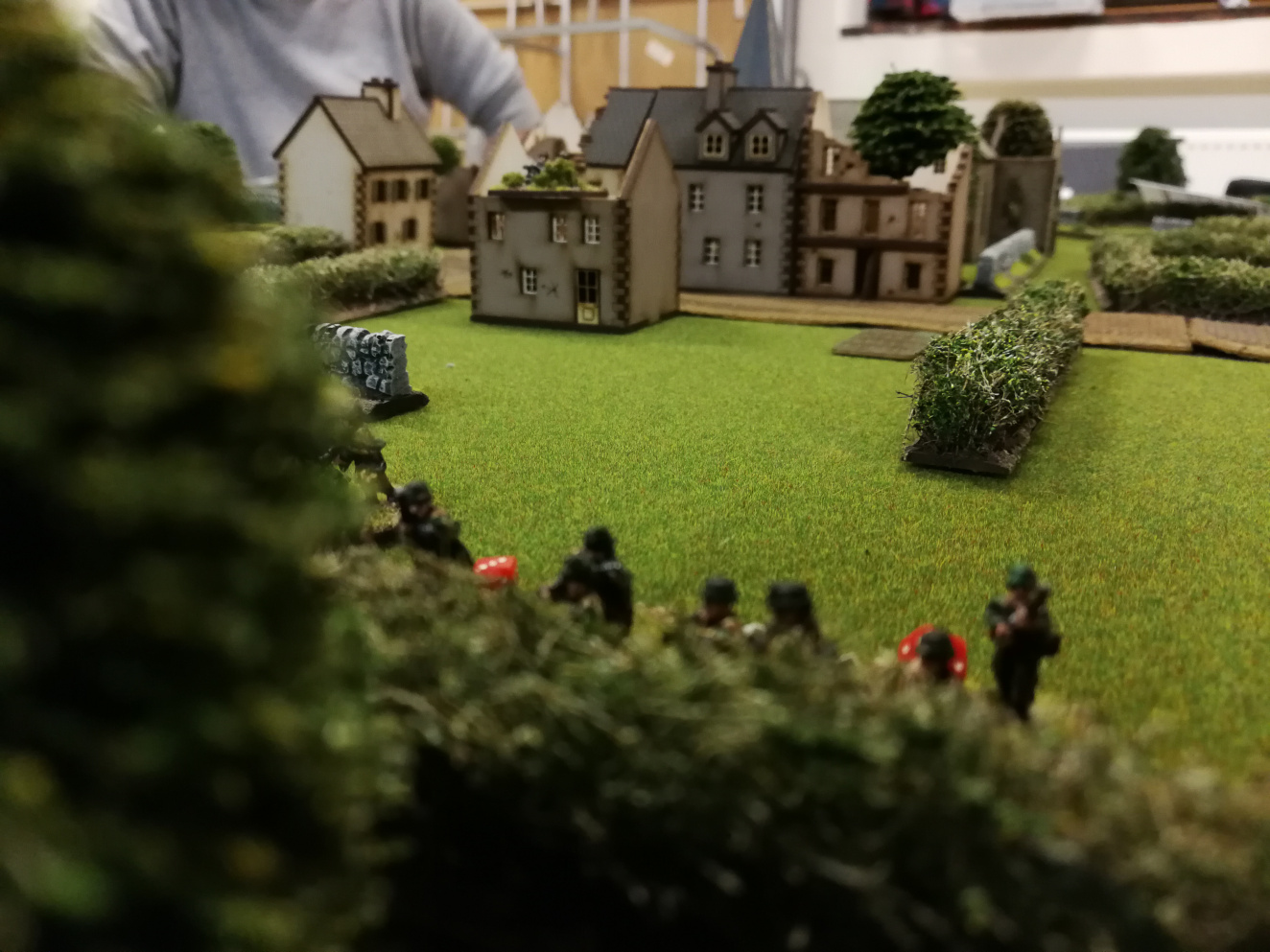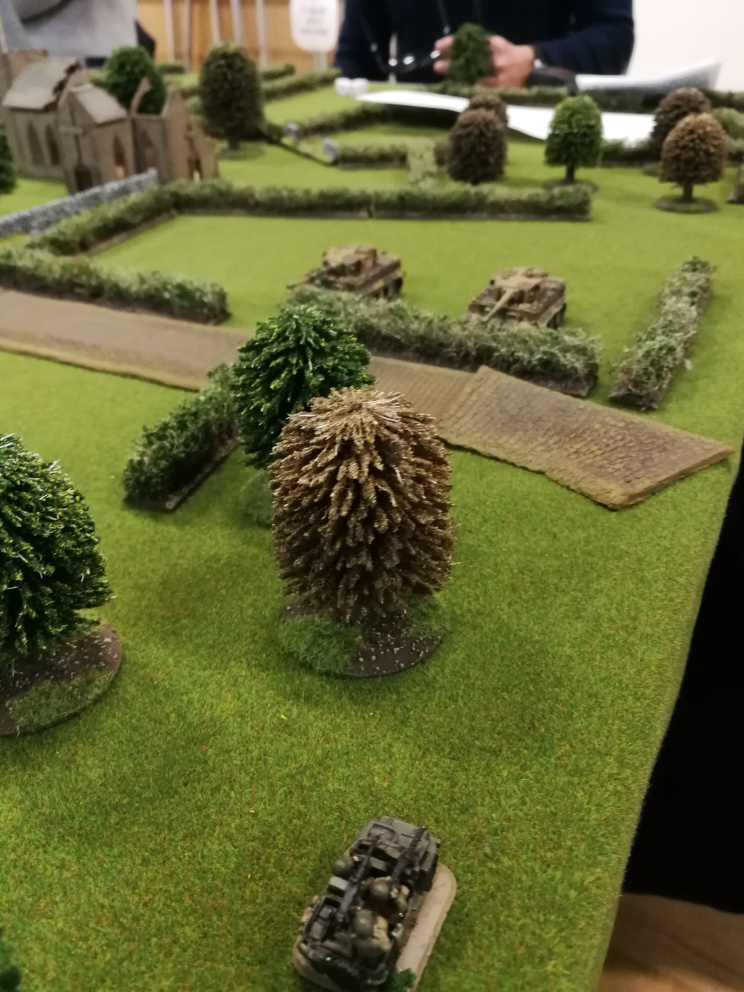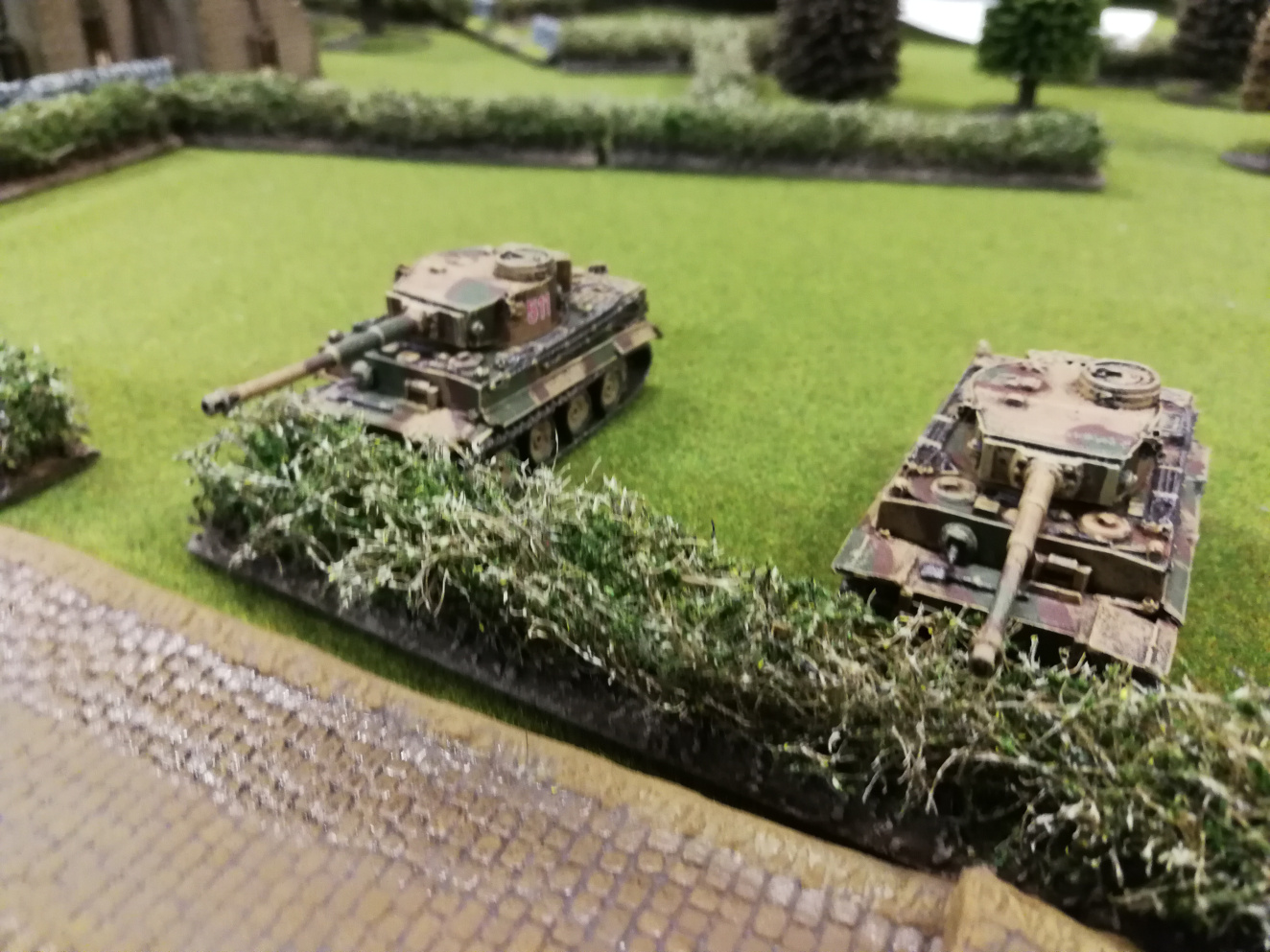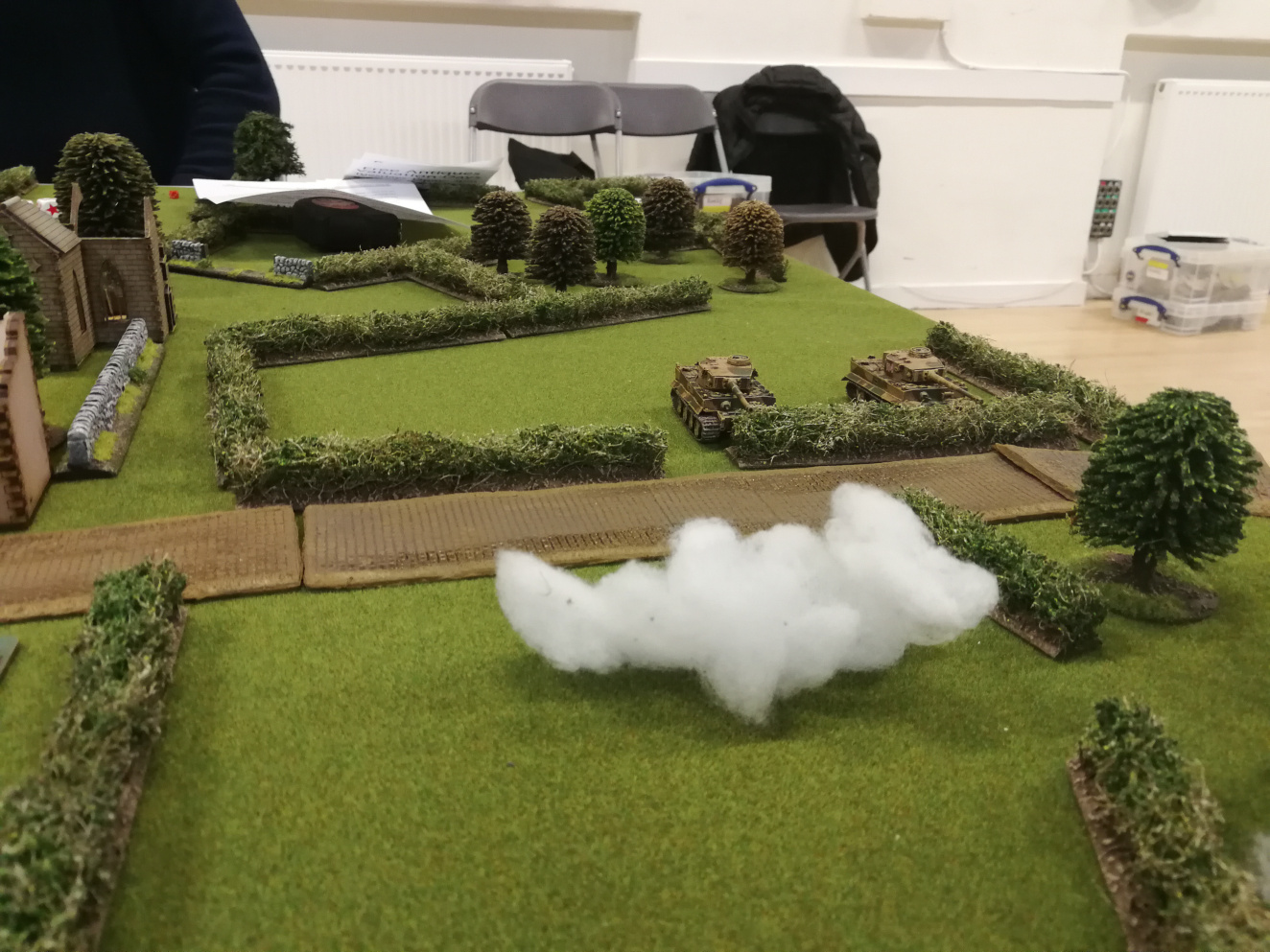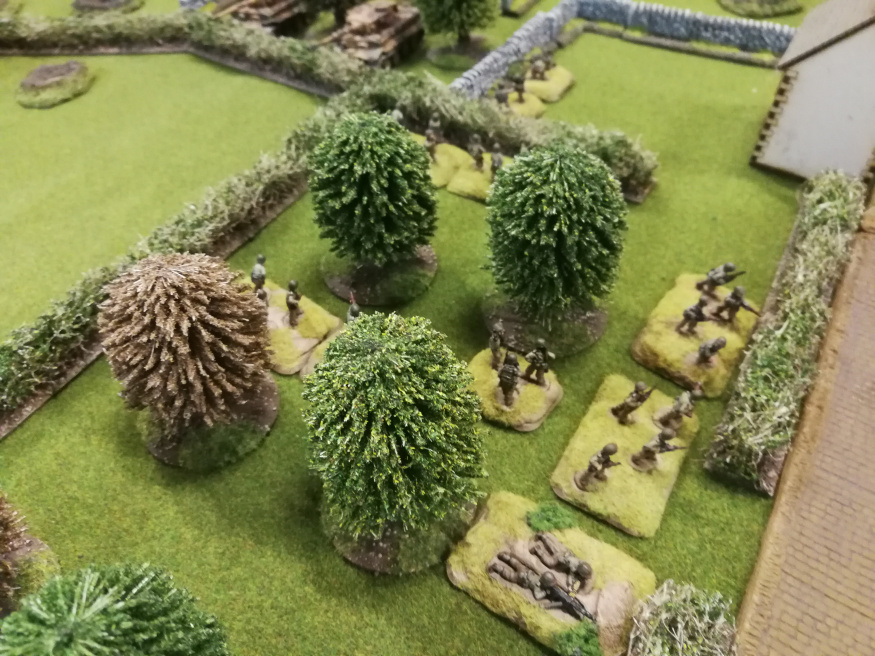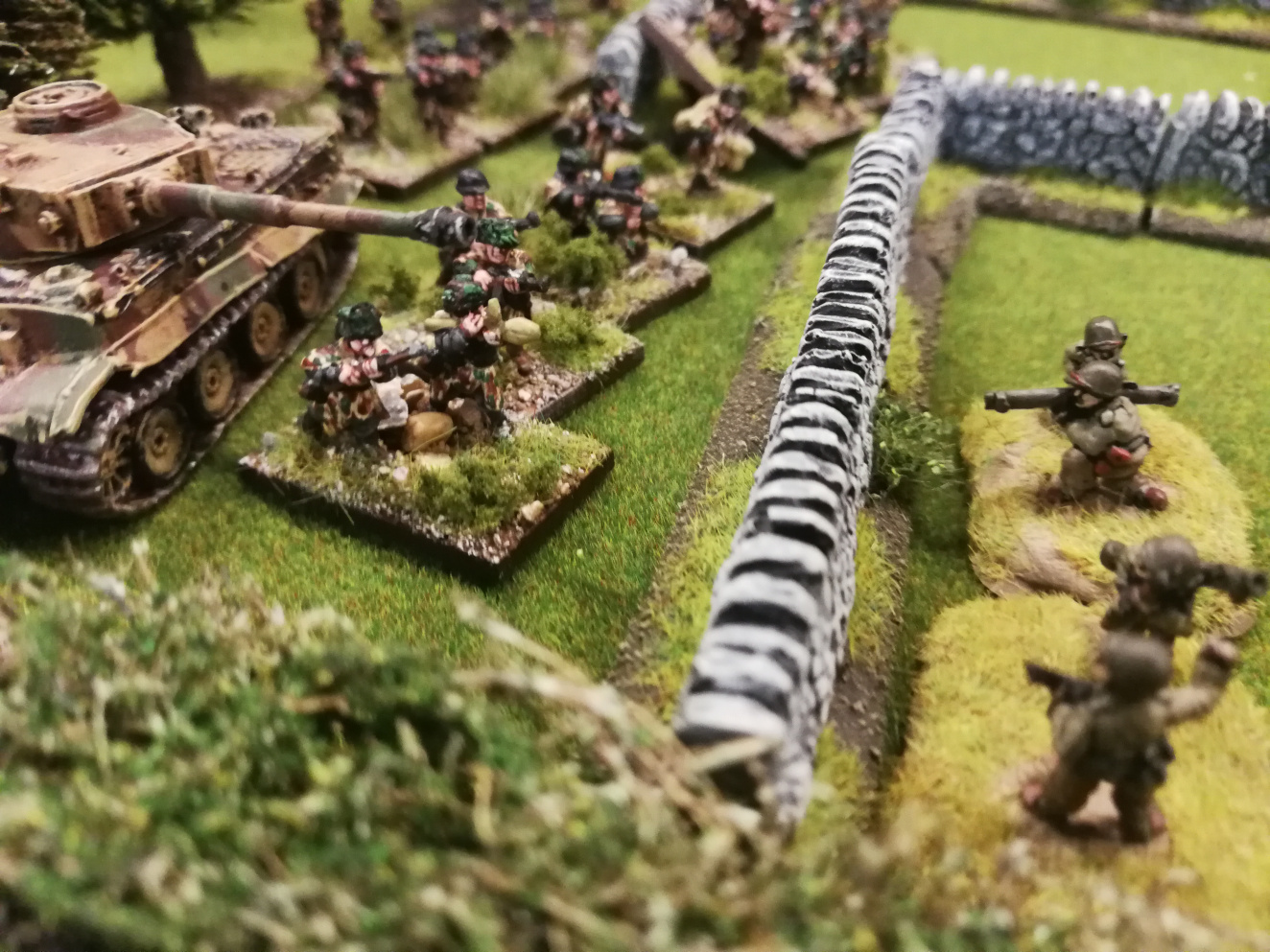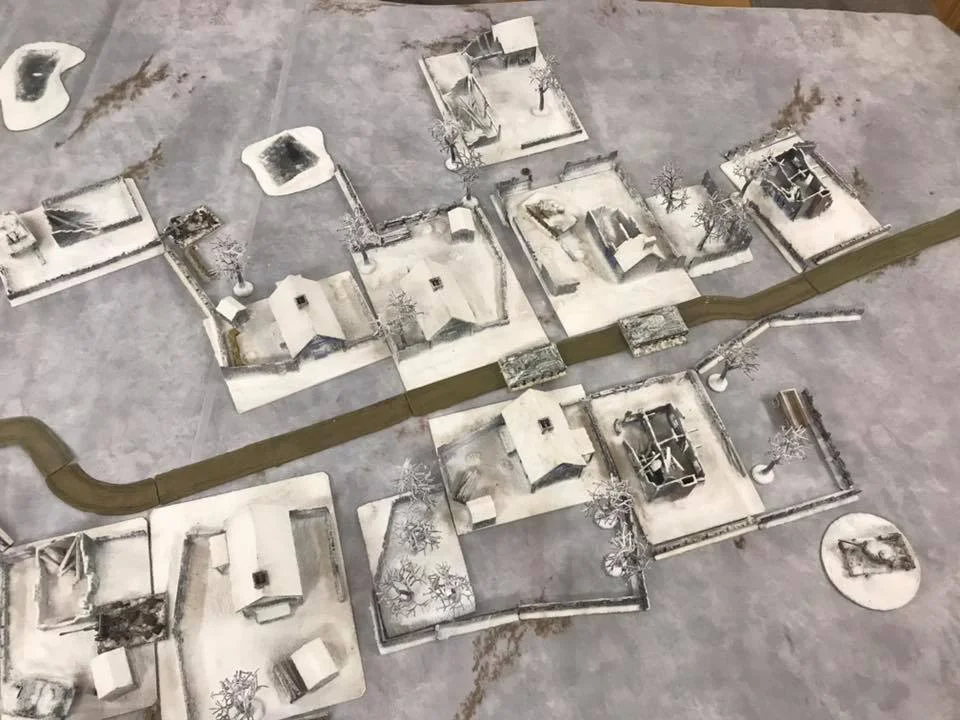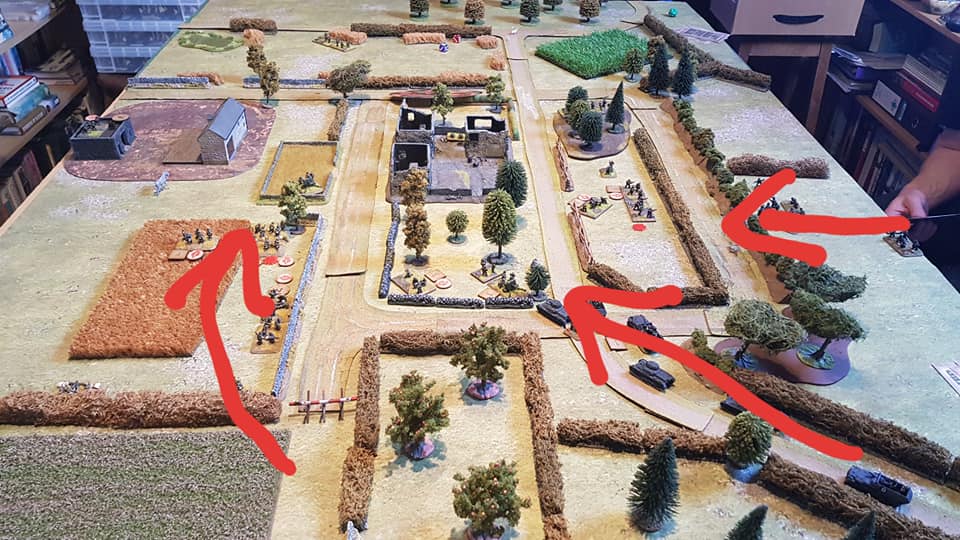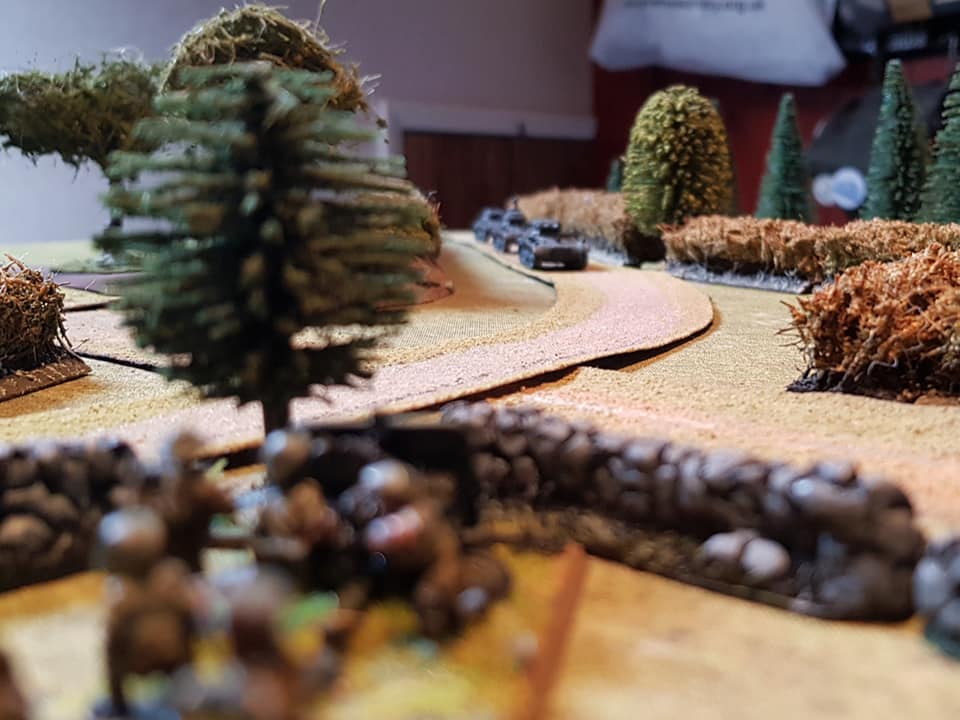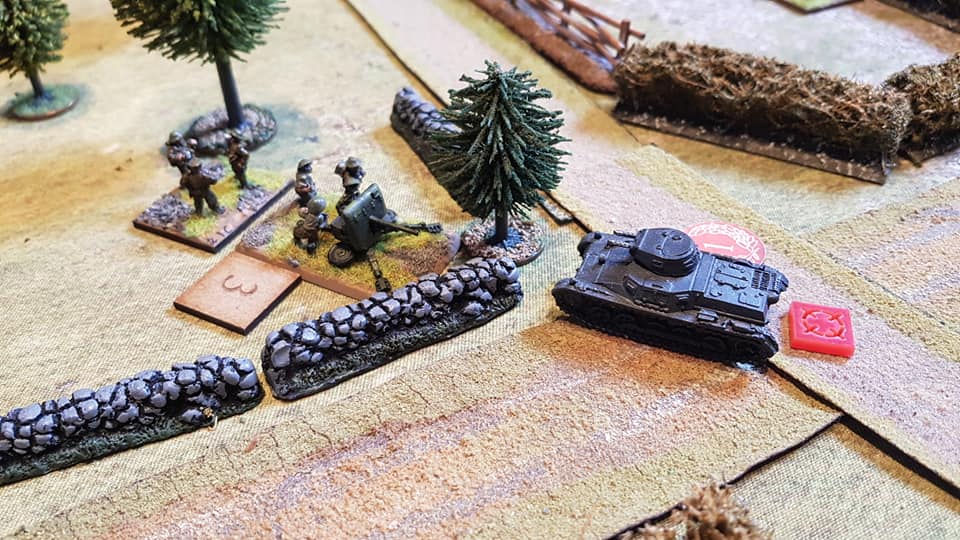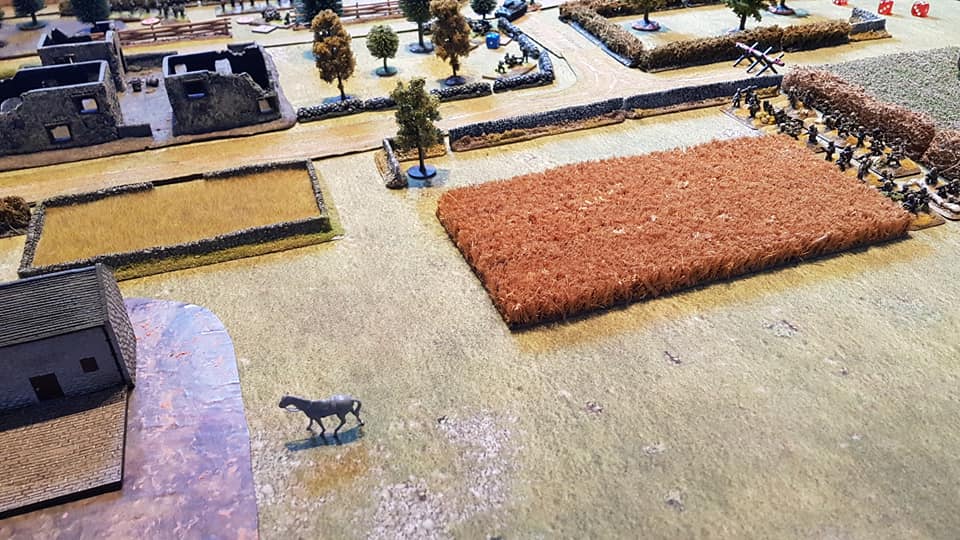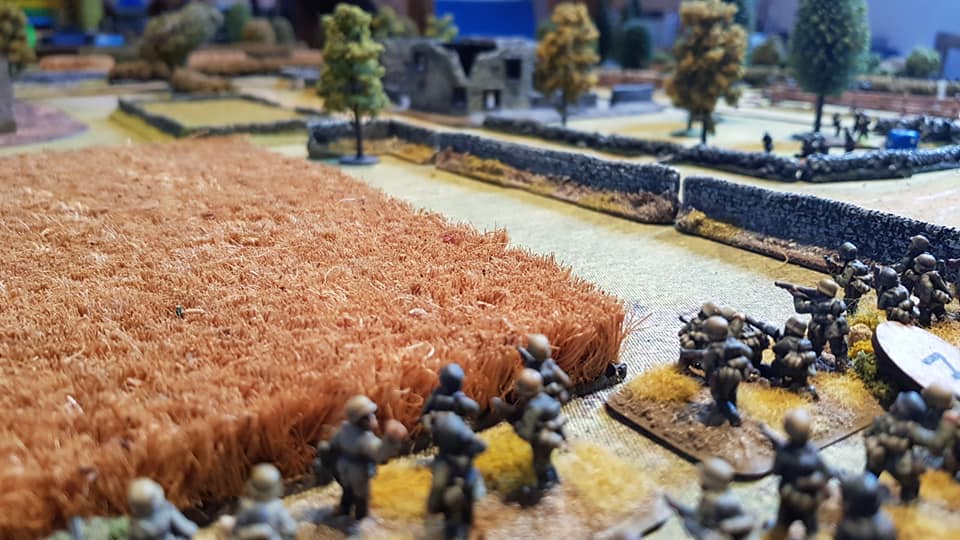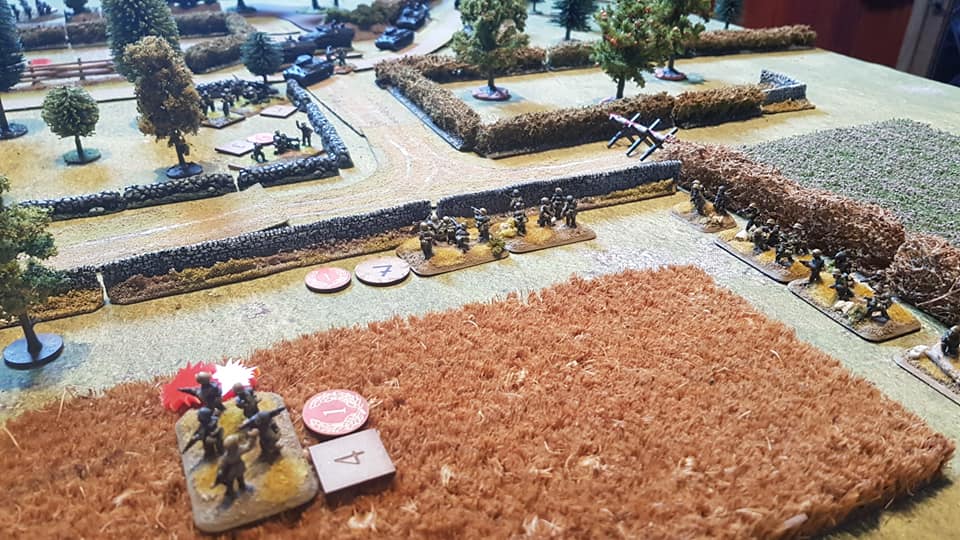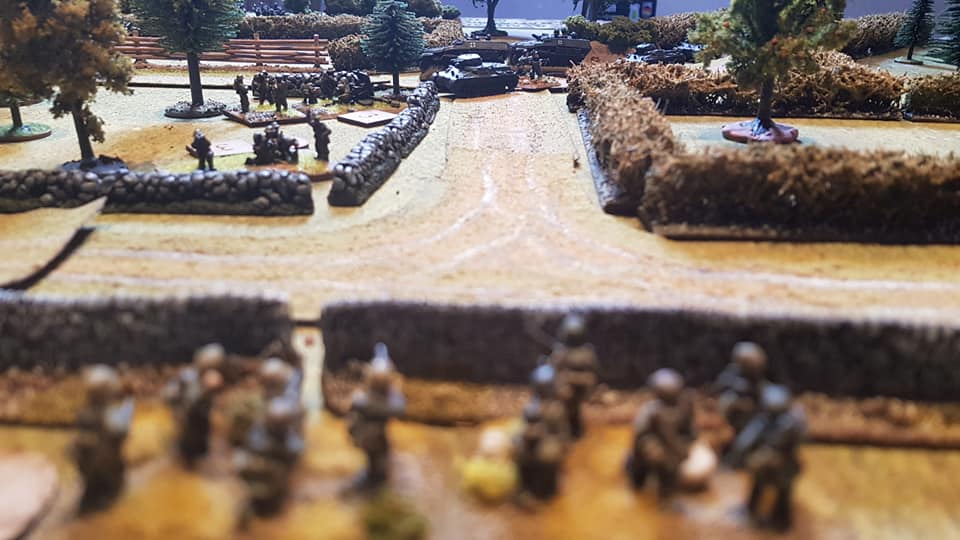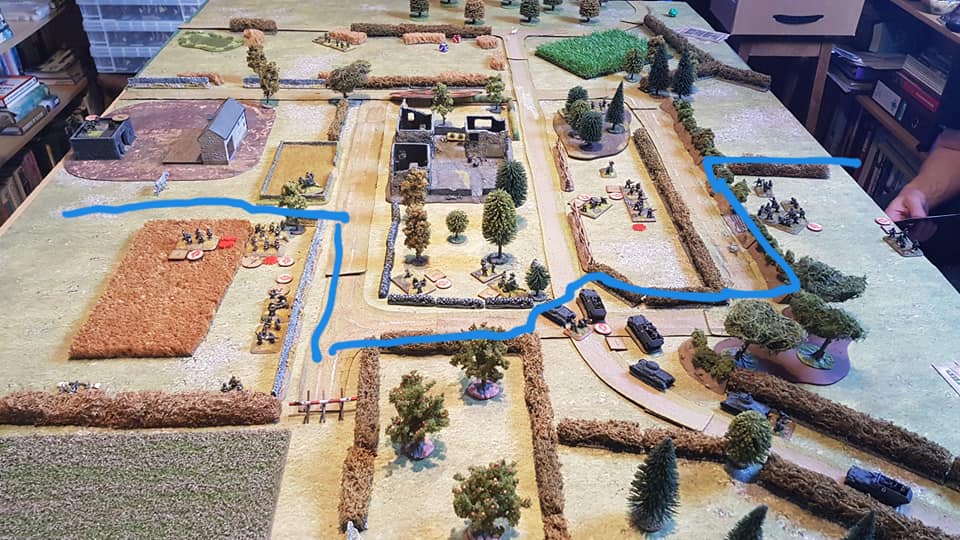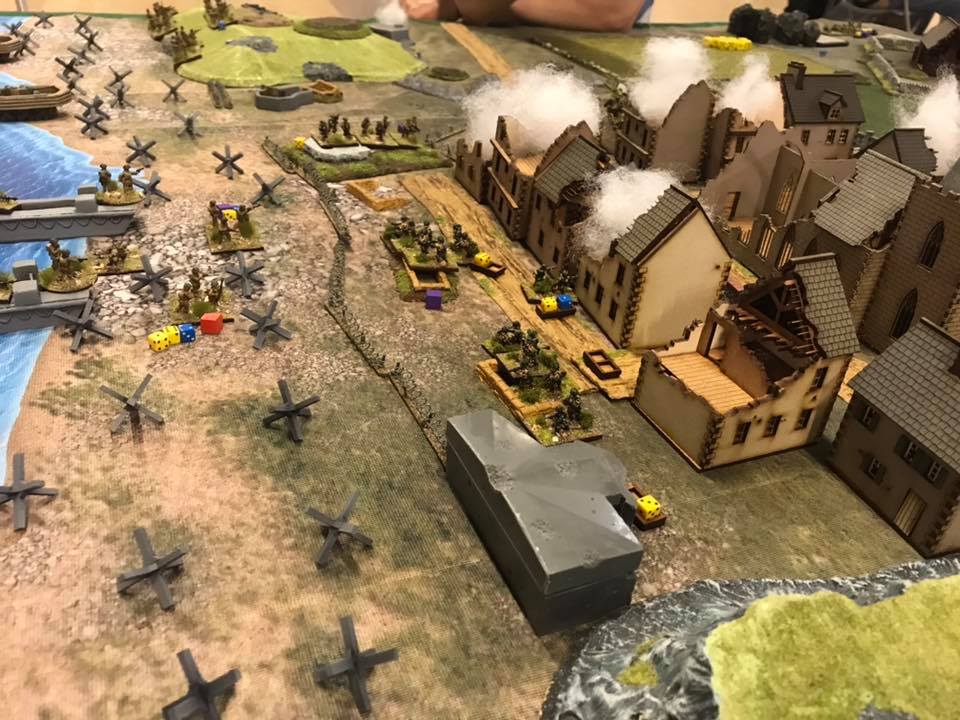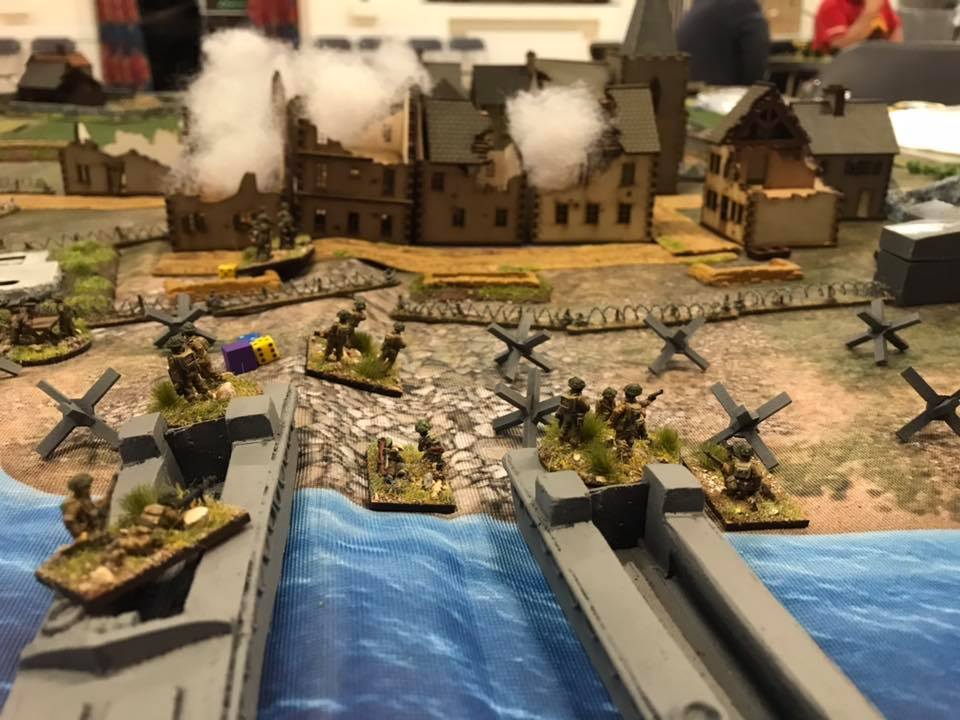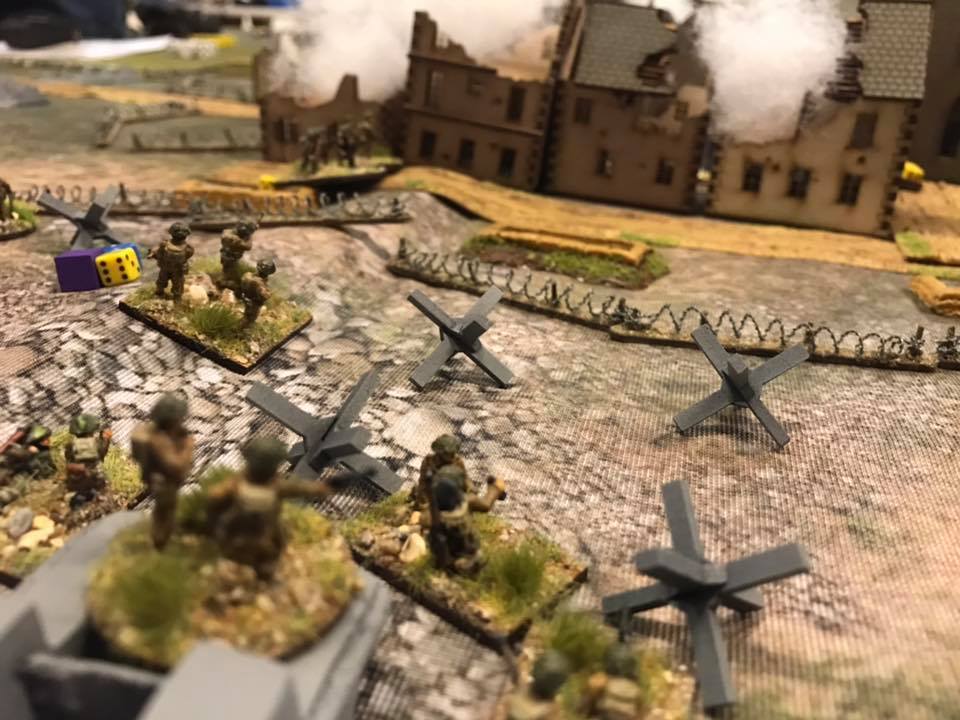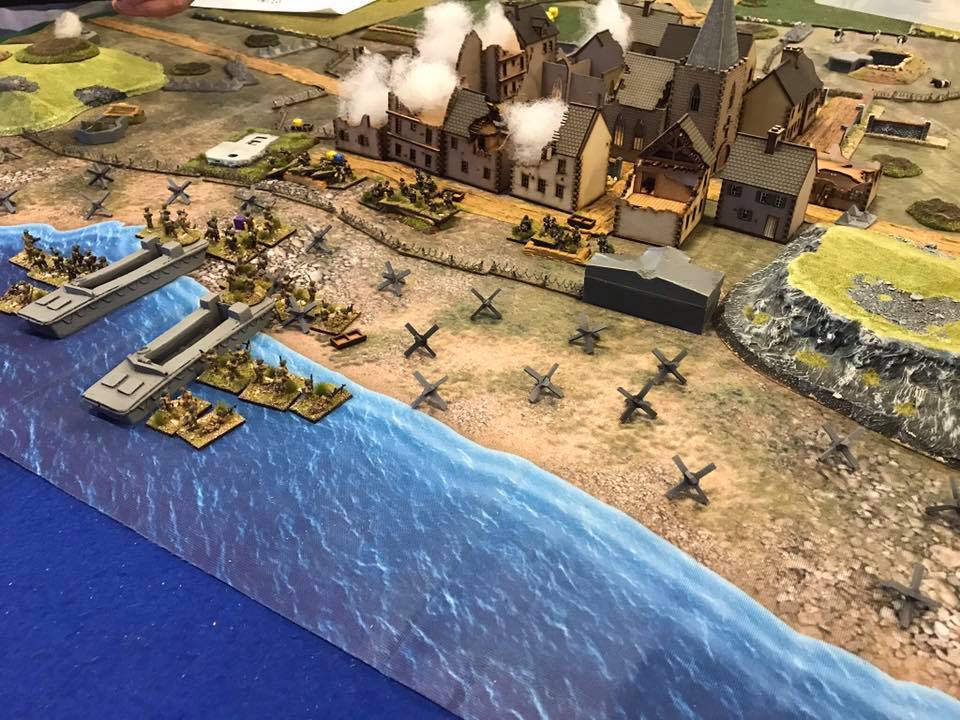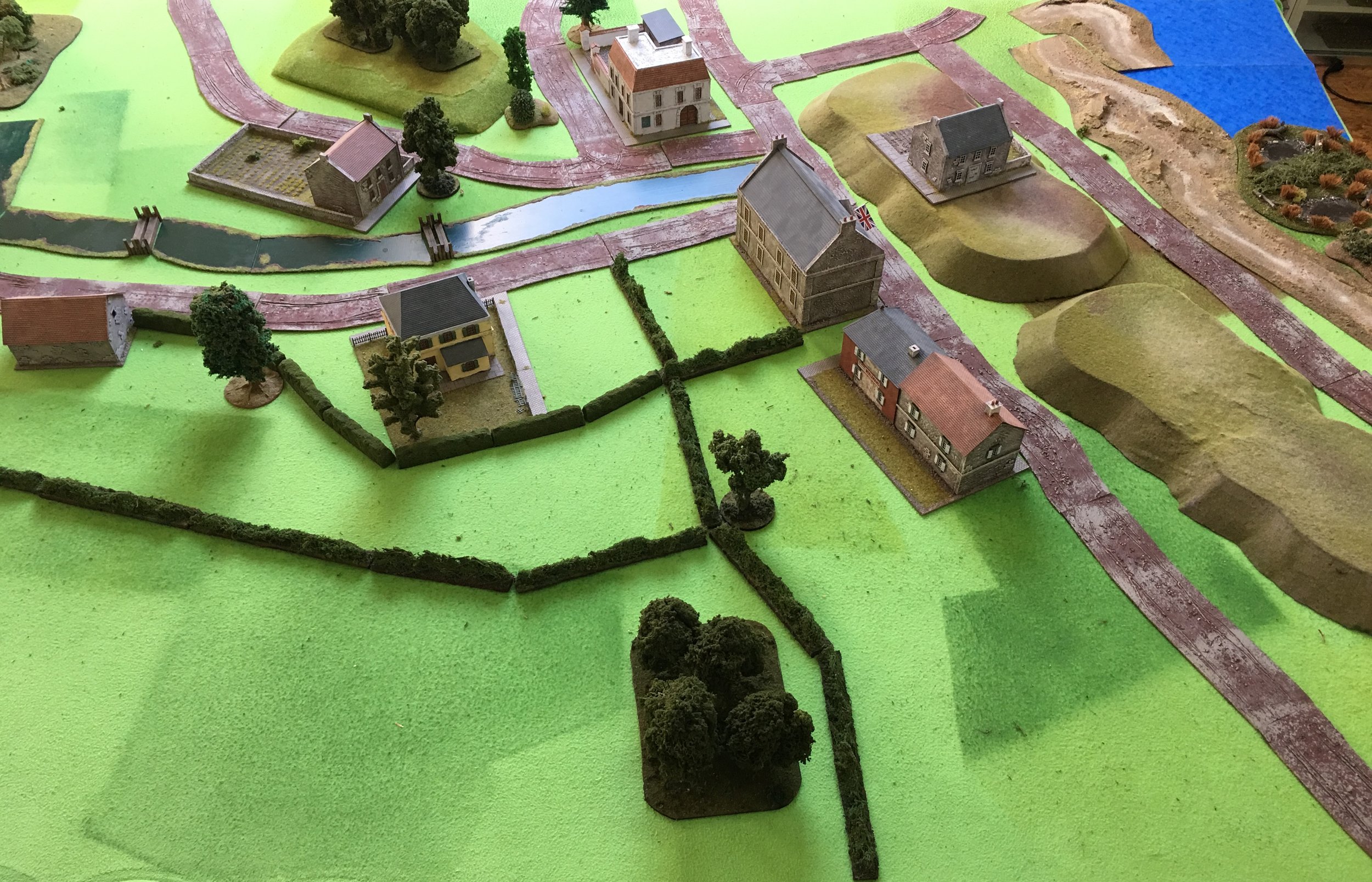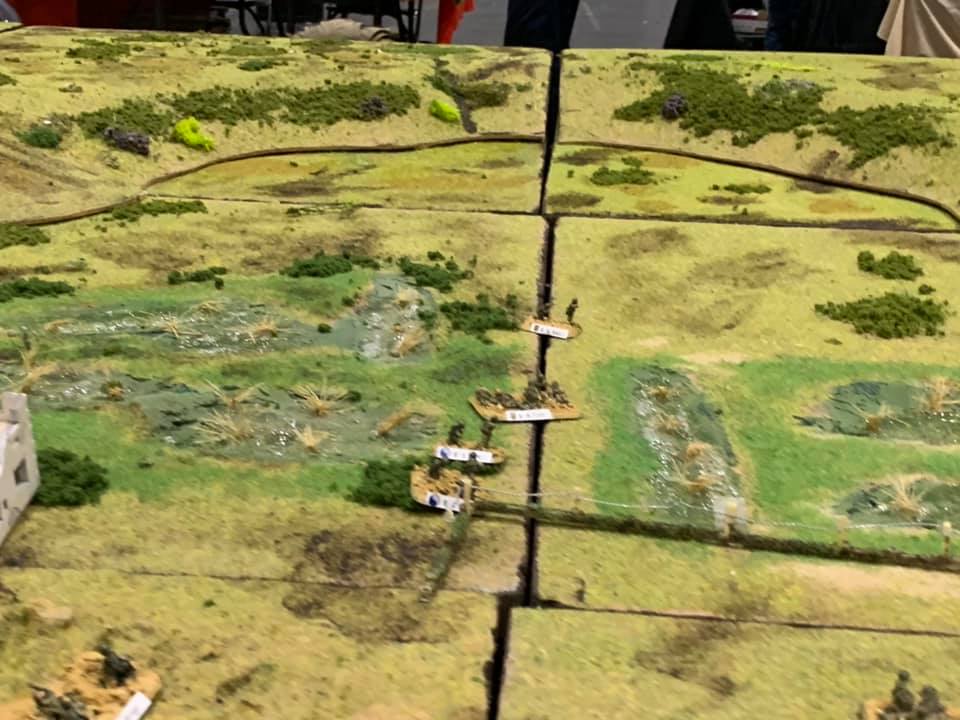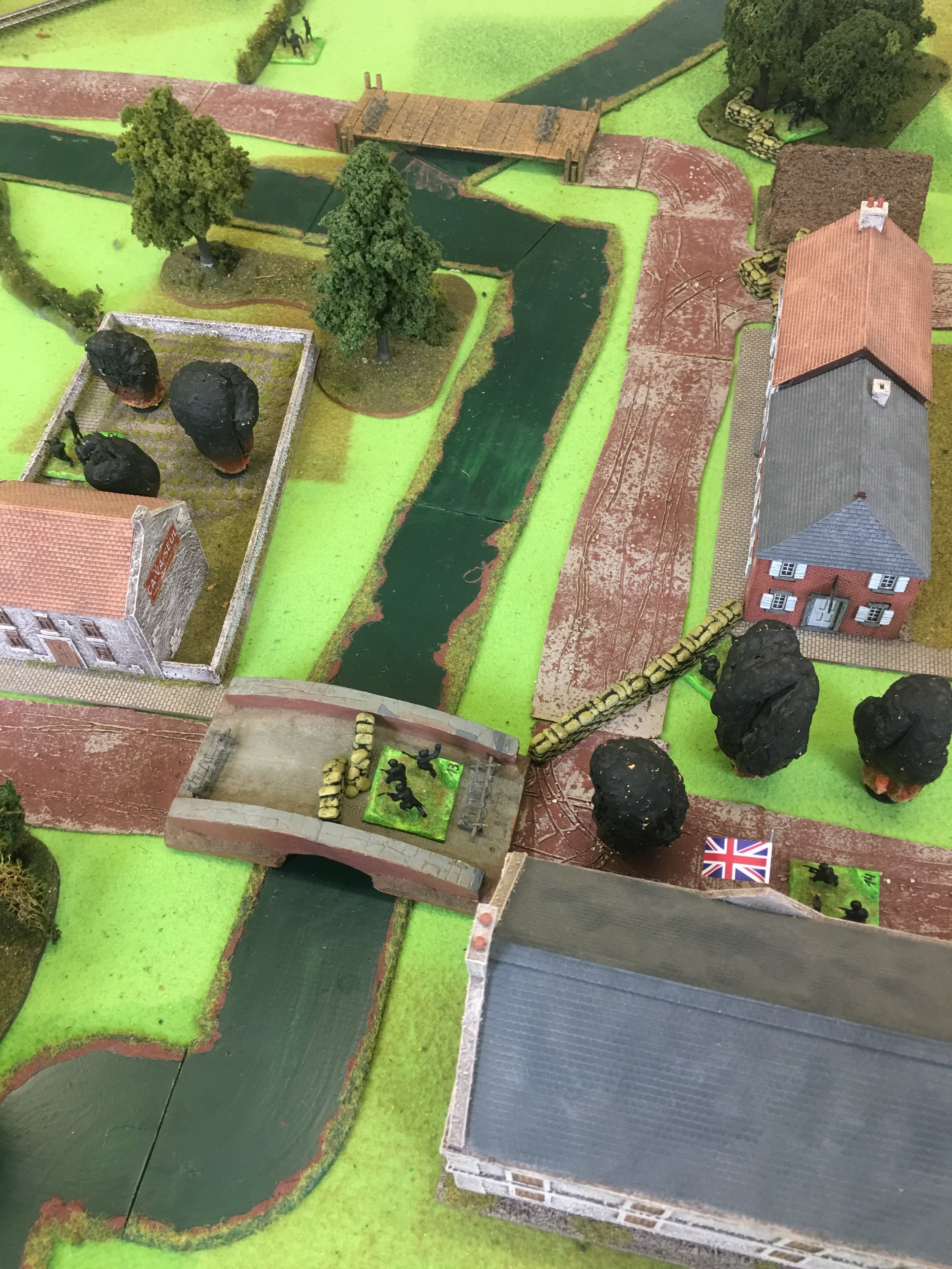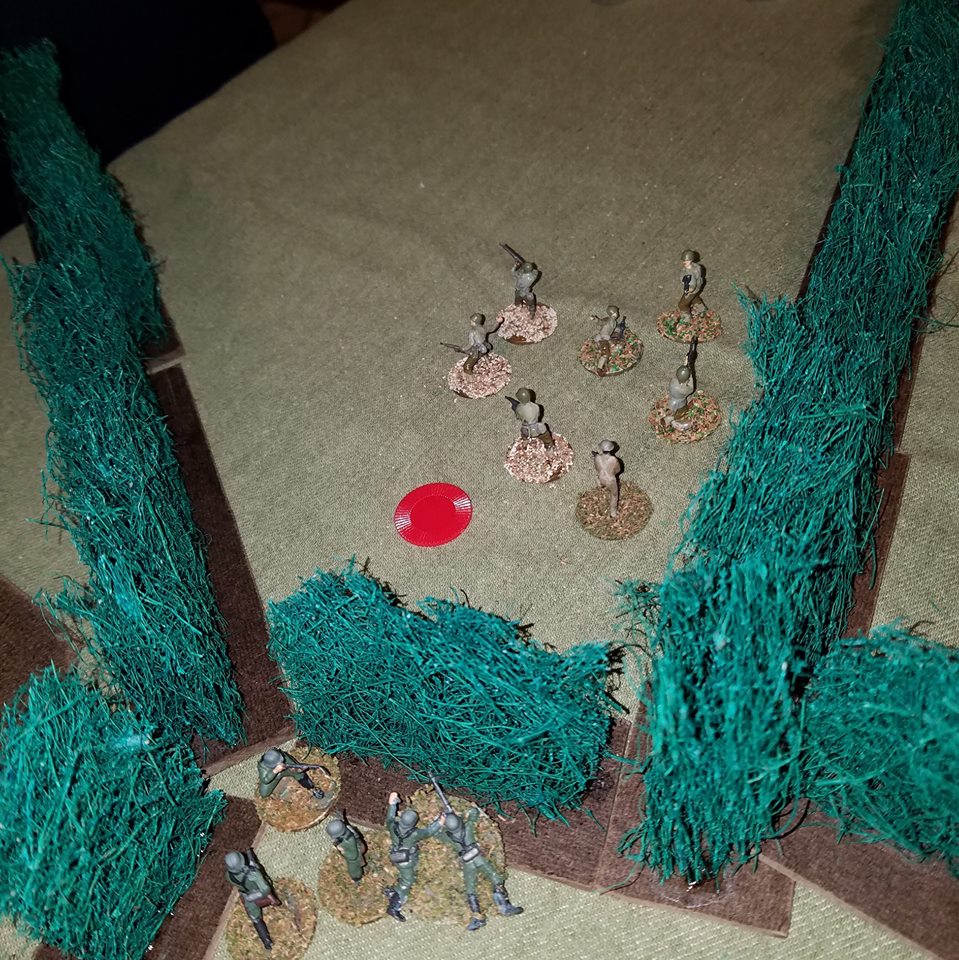This year is the 75th anniversary of the successful assault on Pegasus Bridge by glider infantry of the 2nd Battalion, the Oxfordshire and Buckinghamshire Light Infantry, British 6th Airborne Division, commanded by Major John Howard. The successful taking of the bridges played an important role in limiting the effectiveness of a German counter-attack in the days and weeks following the Normandy invasion.
The Soldiers of Oxfordshire Museum (SOFO) is putting on an exhibition to celebrate the anniversary, and it looks as if a few of us might be able to run a demo game of IABSM one weekend at the museum to help bring the event to life for the general public.
All the running for this is being done by friend Dave, so all I had to do recently was to take part in a playtest of the game to be run…
At this point we ran out of time (we had been dilly-dallying around playtesting things rather than playing hard) so the game was declared a draw. The Brits had the upper hand to the right, the Germans had the upper hand to the left, but time was ticking on and the first serious British reinforcements (Paras!) were apparently about to appear.
A good game, and lots of food for thought for the exhibition game.
Robert Avery






















